














Hello again from a very hot and sticky Mark Nolan, here with the latest edition of the N332 magazine, a bumper summer edition, double the normal size, with 90 pages.
Many people take a break in summer, so we figure it is better to just put everything together into a bumper edition, so you can come and go as you please, from the beach, the pool, or locked inside your home with the blinds down until all of the tourists go home (my personal preference!)! Whatever your personal summer preference, we hope you will find this edition fulfilling.
As always, we have our sections supported by our partners, Coys Rent a Car, Ibex Insurance, The Leader, Quironsalud, and Car Registrations Spain, and this edition we welcome Linea Directa too.
Remember, we have a huge catalogue of articles on the website, n332.es, and you can pick up The Leader every Monday, not forgetting the information on the Facebook page.
If you have any questions you can always email news@n332.es, and whereas we can´t guarantee we will reply to all questions because of the volume we receive, we will try and create future articles around your doubts to answer as many questions as we can for the benefit of all.
Finally, at the bottom of the website, you can find links to all of the official and live traffic information sites, so make sure you check before you travel.
For now, stay safe, and see you out and about.
Mark
Please don´t copy any part of this publication because it is protected by copyright law.
Copyright © 2024 Mark Nolan
All rights reserved. No part of this publication may be reproduced, distributed, or transmitted in any form or by any means, including photocopying, recording, or other electronic or mechanical methods, without the prior written permission of the publisher, except in the case of brief quotations embodied in critical reviews and certain other non-commercial uses permitted by copyright law. For permission requests, write to the publisher, addressed “Attention: Permissions Coordinator,” to the email address, news@n332.es.
As an Amazon Associate, I earn from qualifying purchases..

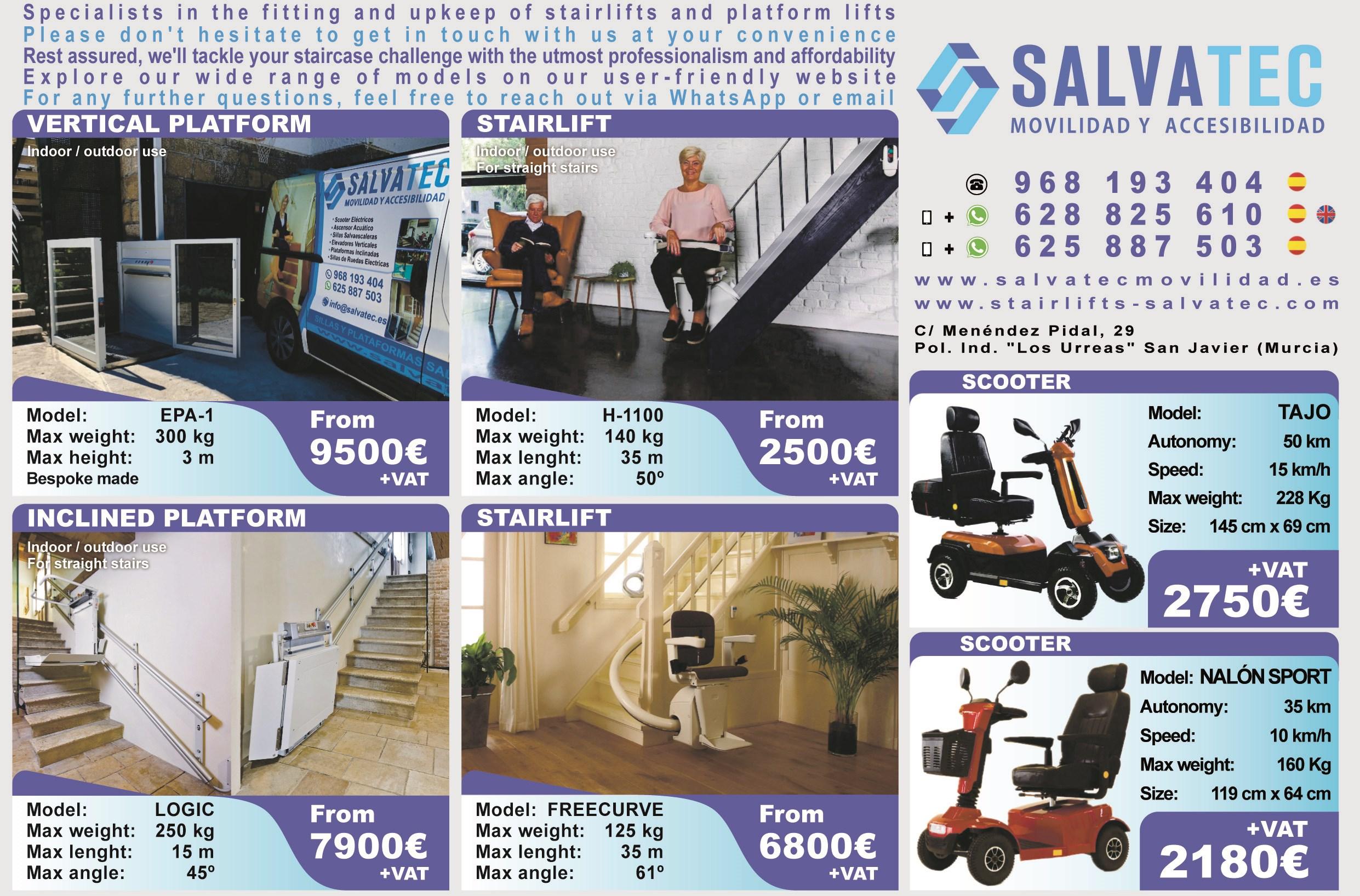
Can You Drive Without a Shirt?
Keep Your Hands to Yourself!
Taking Your Dog to the Beach this Summer
The Importance of Wearing a Seat Belt Properly
What to Do if you See a Dog Locked in a Car
Flip Flops – And other inappropriate footwear
Have You Seen This New Sign Yet? 38 Mandatory DocumentationAll Drivers Must Carry

Taking the Car to the Beach?
Another New Spanish Road Sign to Know 58 How to Identify Different Roads in Spain 60 What to Do If You ComeAcross a Fire Whilst Driving
You Should Normally Park on the Right-Hand Side of the Road
Changes to Child Car Seat Rules from September
CyclistsAre Permitted to Ride in Pairs but NotAlways



A number of fraudulent clone websites have been identified mimicking the official website to book appointments for the Technical Inspection of Vehicles (ITV) in the Valencian Community.
The system recently became centralised and now has a portal for booking appointments for the ITV inspection, the official website being sitval.com, which links to the official booking platform website, citaitvstival.com
Please check that you are using these official websites to access the platform, and no other variation of spelling or extension, such as .net for example.
Awarning has appeared on the official page, saying, “Dear client, remember that sitval.com and its own online reservation system citaitvsitval.com are the only channels to reserve and pay for your appointment.Avoid fraudulent pages”.
These fraudulent pages are demanding payment of 20 euro for appointment management, which has led the Ministry of Innovation, Industry, Trade and Tourism to warn of the new fraud.
"We have noticed that some pages that ask for money to book (ITV appointments) have cloned the new page. We understand that it is a fraud. We remind you that there is only one official page to pay and get an appointment (sitval.com) and we will report anyone who tries to impersonate Sitval," said the Ministry headed by Nuria Montes.
Problems on the web
The new website designed to facilitate the booking and payment of appointments was launched with the intention of streamlining the service and reducing possible fraud. However, in less than 48 hours since its launch, cases of identity theft had already been reported. The Ministry has confirmed the closure of other fraudulent sites it has been made aware of, such as sitval.net, but others may be masquerading unknown.
Vicente Inglada, secretary general of the Union of Consumers (UC) of the Valencian Community, has denounced that his organisation has received complaints from users who have been deceived. In some stations, such as Vara de Quart, cases have been reported of people offering appointments in person in exchange for 20 euro.




The authorities have stressed that the only official platform for managing and paying for appointments is sitval.com. "We cannot pursue those who charge for passing the ITV, as it is a legitimate service, but we can act against identity theft," explained sources from the Ministry of Industry. This type of fraud is worrying because the new website now allows advance payment, which can confuse less attentive users.
The new platform had technical problems at its launch. However, by Wednesday afternoon the system had stabilised and is now operational. The Generalitat is confident that, over time, the service will become normalised, and more appointments will be offered to users.
One of the main problems with the appointment system is that about 15% of people who booked did not show up for their appointment. In the first half of the year, around 900,000 vehicles were inspected, which means that about 100,000 appointments were missed.
The Generalitat has decided to increase the number of inspections assigned to the ITV stations: Valencia will be the province with the largest reinforcement, with 121 inspections starting this summer. The arrival of 59 inspectors in Alicante and 23 in Castellón is expected. This increase in staff aims to compensate for absences caused by the holidays and improve customer service.





The Guardia Civil, in collaboration with the European Anti-Fraud Office (OLAF), in the so-called “Dashboard” operation, arrested and investigated 12 people for being related to the management and handling of waste from a scrapyard in the town of Villagarcía deArousa (Pontevedra), which lacked the necessary permits.
Six searches were carried out at homes, scrapyard and warehouse, where numerous documentation related to the operation has been found, which is being analysed.
The operation began when the Guardia Civil detected in the Port of Santander (Cantabria) the arrival of trucks with vehicles from the United Kingdom and destined for a scrapyard in Villagarcía de Arousa. These landings were also carried out in other ports in Spain and in the Calais Euro-Tunnel (France). The actions carried out determined that since the beginning of Brexit, a total of 424 vehicles (more than 600,000 kilos of scrap) have arrived in Spain destined for that scrapyard.
For this reason, the Guardia Civil established contacts with the Illicit Trafficking, Health and Environment Unit of the EuropeanAnti-Fraud Office (OLAF).





As a result, it was possible to verify that, in five years, the scrapyard had received more than 5,000 vehicles, both from foreign and national origin, carrying out a minimum recovery of the fluids from the air conditioners, being dangerous waste that must be recovered and delivered to an authorised handler.
Seprona, the environmental branch of the Guardia Civil, was able to verify in the scrapyard itself the existence of vehicles with the destruction and decontamination certificate, not having been completely decontaminated and remaining with different waste such as oils, brake fluids, air conditioning fluids, etc.
These fluids (tetrafluoroethanes) upon contact with air volatilise with a capacity to remain in the atmosphere for 14 years, which together with their characteristics make this type of gas part of those that generate the problem of global warming. Furthermore, they are considered a detriment to the balance of natural systems, and through this, to people's health.
Agricultural warehouse with more than 4,000 used tyres
Part of the components of the vehicles managed by the scrapyard were processed through online sales, including from an agricultural warehouse where more than 4,000 used tyres were located, the origin of which is assumed to have been from the scrapyard under investigation.
The owner of said warehouse did not have authorisation to store and sell the tyres, which, together with the fact that the property is located in a forest environment, is considered a risk as a result of the large volume of tyres stored.
The exploitation phase of the operation, carried out last week in the provinces of Pontevedra and León, resulted in seven detainees and five people under investigation who were charged with alleged crimes against natural resources and the environment, false certificates of destruction and decontamination of vehicles, money laundering, against public finances and membership in a criminal group.
Vehicles destined for scrapping from the United Kingdom must have the relevant communications and authorisations from the environmental authorities of Spain to be able to carry out cross-border shipments of waste, in this case lacking such authorisations.




Spain recorded a total of 8,031 vehicle thefts during the first three months of 2024, according to data provided by the Ministry of the Interior's Crime Portal. This figure represents an increase of 2.4% compared to the same period last year. Everything indicates that the increase in thefts is attributable to the growing sophistication of organised criminal networks and the high demand for spare parts on the black market.
According to the ministry's data, the communities where the most robberies have occurred during the year have been the Community of Madrid, with 1,898 robberies (+2.0%), Catalonia, with 1,888 (although with a decrease of 6.3%) and Andalusia, with 1,526 (+13.3%). Not all autonomous communities have had a similar evolution in this problem.
The increase in vehicle thefts stands out in Cantabria, (103.8%, 543 thefts), Ceuta (+77.3%, 39), Melilla (63.6%, 19 and La Rioja (+61.5%, 21 robberies). 45 robberies (+7.1%) and the Basque Country, 162 robberies (+4.5%).
On the contrary, the communities that have evolved the best during the first three months of 2024 have been Asturias, with 54 robberies (-20.6%) and Navarra, with 32 robberies (-20.0%) that have seen how they have had significant decreases due to greater effectiveness in the prevention strategies of State security forces, international cooperation and improvements in surveillance and security measures implemented by vehicle owners.
Other communities that are progressing favourably are the Balearic Islands, with a decrease of 11.1% although 335 robberies, Aragón, (-9.5% and 86 robberies), Murcia (-8.9% and 214 robberies), Castilla y León (- 7.4% and 112 robberies) and Galicia (-4.4% and 131 robberies).
If the trend of the first quarter continues throughout the year, it is very likely that the number of thefts will exceed 32,820 in 2023, without considering thefts or misappropriations.
José Rubio, General Manager of LoJack Iberia, explained: “The figures for vehicle thefts during the first months of 2024 alert us to a major problem in society that we need to solve, especially as the summer holidays approach. At LoJack, thanks to the installation of our device (always in a secret location), advanced solutions for tracking and recovering vehicles, and close collaboration with state security forces, we ensure that our users have their vehicles back in their possession, usually in record time.”




To reduce the number of car thefts, efforts must be made on several fronts. On the one hand, authorities must continue to strengthen crime prevention strategies and international cooperation to combat the illegal trade in cars and car parts. On the other hand, drivers are advised to take these additional security measures:
1. Installation of anti-theft devices: the use of immobilisers, alarms and tracking systems, such as those offered by the specialist vehicle security company LoJack, are a guarantee that can make the difference in the event of theft. LoJack recovers many stolen vehicles thanks to a technology that prevents the action of GPS/GSM/GPRS signal inhibitors, and that works even in garages or basements.
2. Park in well-lit and busy areas: Most thefts are committed in low-traffic environments and in areas with little or no visibility. Having the vehicle in garages or, preferably, secure parking lots, can make a difference.
3. Use of physical blocks: Use bars on the steering wheel or pedals that may make the mobility of the vehicle impossible.
Vehicle thefts byAutonomous Communities:
1.Andalusia: 1,526 (+13.3%)
2.Aragon: 86 (-9.5%)
3.Asturias: 54 (-20,6%)
4. Balearic Islands: 335 (-11.1%)
5. Canary Islands: 403 (+8.3%)
6. Cantabria: 53 (+103.8%)
7. Castile and Leon: 112 (-7.4%)
8. Castile-La Mancha: 181 (+29.3%)
9. Catalonia: 1,888 (-6.3%)
10. Valencian Community: 805 (+8.6%)
11. Extremadura: 45 (+7.1%)
12. Galicia: 131 (-4.4%)
13. Madrid: 1.898 (+2,0%)
14. Murcia: 214 (-8.9%)
15. Navarra: 32 (-20.0%)
16. Basque Country: 162 (+4.5%)
17. La Rioja: 21 (+61.5%)
18. Ceuta: 39 (+77.3%)
19. Melilla: 18 (+63.6%)
20.Abroad: 28 (+3.7%)




The Guardia Civil, within the framework of the operation “Z-Babylon”, dismantled an international criminal organisation specialising in the theft and counterfeiting of vehicles and their subsequent transport to Mauritania, Senegal, Poland, and Ukraine, where the vehicles were introduced into the legal second-hand vehicle market.
In total, 25 people were arrested. 19 of these arrests took place in Spain, four in France and two in Poland.
The investigation began in November 2021 when the Central Operational Unit (UCO) of the Guardia Civil detected the shipment of four vehicles stolen in Madrid that were being transported through a road vehicle transport company, bound for a port on the FrenchAtlantic coast.
These vehicles had a very similar pattern: they were high-end hybrid vehicles, they had forged French number plates and none of them showed signs of being broken into. In addition, they were all stolen in different locations near Madrid.
Following these events, the Guardia Civil, together with the police authorities of France, Belgium, Poland and Austria, thanks to coordination with EUROPOL, was able to learn both the final destination of the vehicles and their relationship with an active criminal organisation based in France and Belgium specialising in the theft of high-end vehicles in several European countries.
Modus operandi
As regards the part of the organisation that operated in Spain, the UCO identified two Moroccan men living in Madrid and Malaga as the main perpetrators. They were the ones who determined which makes and models of vehicles were to be stolen as the most in-demand, at the same time supplying the documents and chassis numbers to be engraved on them, as well as the falsified French number plates.
Once the vehicles they wanted to steal were located, and using computer tools and malicious software developed by the organisation itself, they altered the manufacturer's security measures, managing to start the vehicle in a few minutes without any need for forcing entry.
Once stolen and after a “cooling off” period that ruled out any type of geolocation, the vehicle, now in a safe place, was modified in its physical records, such as chassis number and manufacturer identification stickers, making them match with legal vehicles registered in France.




With the falsified vehicles having the external appearance and documentation of a legal vehicle registered in France, the organisation used road transport companiesmainly Spanish and Lithuanian - to transport them to the main French ports, where they were shipped to Mauritania or Senegal.
Similarly, several of the stolen vehicles were driven by members of the organisation itself to different locations in Poland where they were introduced into the market through companies that buy and sell used vehicles.
It is worth noting that the degree of falsification of the identification elements on the stolen vehicles allowed them to easily avoid police and customs controls on this type of transport, even when exporting outside the EU.
The success of this operation is largely based on the creation of a joint investigation team within EUROJUST and EUROPOL. Thanks to this, the bilateral exchange of information between the countries concerned has made it possible to uncover the extent to which the crimes investigated extend beyond the borders of the EU.
In this way, it was possible to identify a Mauritanian citizen residing in France with a criminal record in that country for similar crimes, who, for the investigators of this operation, was the person most responsible for coordinating the preparation of the falsified French documents, the contracting of insurance for the stolen vehicles, as well as chartering the vehicles toAfrica.
Another key figure in the dismantled organisation was the right-hand man of this Mauritanian citizen, a Moroccan citizen based in Brussels, who played a key role in coordinating all the branches of this organisation in the different countries where they operated, personally taking charge of any incident that arose, from the theft of vehicles in Spain to their final transport within and outside the European Union.







The Guardia Civil, within the framework of the COMPLUTUM CAR operation, arrested 10 members of a criminal organisation dedicated to stealing vehicles in European countries, which they transported to Spain to register them with false documentation. The detainees are charged with the crimes of document falsification, receiving stolen goods, fraud, simulating a crime, violating road safety and belonging to a criminal organisation.
During the operation, nine high-end vehicles were recovered, along with a large number of documents for forgery and documents already forged, as well as more than 23,000 euro in cash from the sale of the stolen vehicles. The commission of these crimes has brought the criminal organisation a financial benefit of more than 1,700,000 euro, and the bank accounts of all those arrested have been seized.
The investigation began more than a year ago, when the Central Investigation Group of the Traffic Division detected the activity of a highly specialised criminal group that was dedicated to illegally acquiring vehicles in Germany and registering them in Spain. To do this, they transported them to our country and before registering them, they passed the prior technical inspection with false documentation to obtain the corresponding ITV card.
Thanks to the collaboration with the Provincial Traffic Headquarters, it was possible to obtain that the registration files, where they came with the Spanish technical inspection card and after presenting falsified documentation again, were assigned national number plates. Then, and before the police reported them for theft, they were transferred to third parties who were unaware of their illegal origin.
Thanks to international cooperation with other European police forces, it was possible to determine the cross-border ramifications of this criminal group. In addition, it was found out that the vehicles stolen in Spain were sold on international markets, and in the same way, models stolen in other European countries were sold as legal vehicles, after falsifying all the documents.
The members of the criminal organisation fraudulently acquired vehicles of different high-end brands and models in Germany and Spain. Once they were located and inspected, they falsified the documentation they provided so as not to have any problems when purchasing them.
They also travelled from Germany to Spain and legalised the goods with falsified documents for their subsequent introduction into the second-hand or used market.




In the latest figures published by the Directorate General of Traffic in Spain, the DGT, as of 18 August 2024, 725 people have died on the roads of Spain.
Of these fatalities, 210 people lost their lives on motorways, and 515 on other roads.
287 of the victims were vulnerable road users, consisting of 196 motorcyclists, 54 pedestrians, 7 on mopeds, 2 on VMPs (electric scooters), and 28 cyclists.
These figures are only on the road network under the control of the DGT, and do not include many local incidents.
In the main holiday break of the summer alone, that is between 14 and 18 August, 15 people died in 13 fatal incidents.
Of these, 9 were vulnerable road users, 7 motorcyclists and 2 pedestrians.
We have to bear in mind that these figures are still extremely high, and in the context of a time when vehicles are getting safer, and so we must start to realise that these are the actions of humans, normally drivers, and their attitude to driving.
An example to prove that comes from the Valencia Region, although the picture is similar around the country, where during the month of July, the Traffic Group of the Guardia Civil brought a total of 250 drivers to court as alleged perpetrators of crimes against road safety.
To be clear, to be classed as a “crime”, the offence must be particularly serious. Most traffic offences are administrative, in so much as you will be dealt with through a fine and possible loss of points. Criminal acts are those so serious they pet lives at considerable risk.Again, a choice by the driver.
Of those across Valencia who were taken to court, 87 were for driving without a permit or licence (of which 44 had already exhausted all of their points, 7 for being provisionally deprived by court decision and 36 for never having obtained a permit or licence in the first place), 142 were brought to court for doing so under the excessive influence of alcohol, 2 for excessive speed, 9 for reckless driving, 1 for leaving the scene of an incident and 9 for driving under the influence of drugs.
As you can see from the statistics, each of those dangerous actions which resulted in a court appearance were the choice of those involved. Just like we all have a choice to obey the traffic rules and make the roads safer for all.

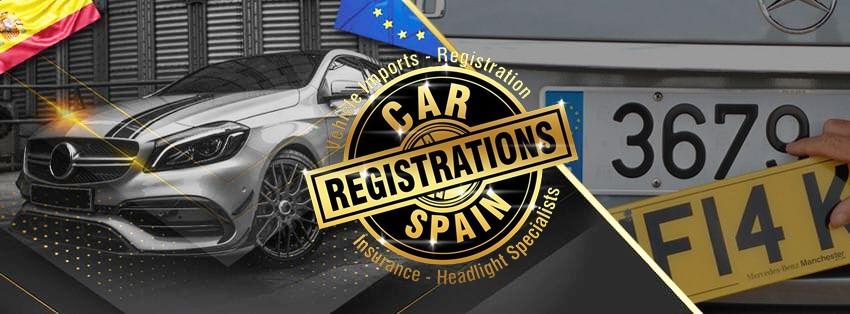
by Car Registrations Spain
Buying a vehicle in Spain involves several tax considerations that both the seller and buyer need to be aware of. Let's break down the key taxes involved to help ensure a smooth transaction.
1. TRANSFER TAX (Impuesto sobre Transmisiones Patrimoniales - ITP)
When a used vehicle is sold between private individuals in Spain, the buyer must pay the Transfer Tax (IPT) This tax doesn’t apply if you’re buying from a dealership (that’s where VAT kicks in instead). The ITP rate varies between 4% to 8% of the vehicle's market value, depending on the region.
2. IVA / VAT - Impuesto sobre el Valor Añadido (IVA)
If the vehicle is being sold by a business (like a dealership), IVA will apply. For used cars sold by dealers, VAT might only be applied to the dealer's profit margin, reducing the cost for the buyer.
3. ROAD TAX (Impuesto sobre Vehículos de Tracción Mecánica - IVTM)

This is the annual road tax known as Impuesto sobre Vehículos de Tracción Mecánica (IVTM). The seller needs to ensure that this tax is paid for the current year before selling the vehicle. This tax is paid to the local council, and the amount varies based on your location and vehicle type.
4. TRAFICO FEE

While not a tax, there’s a fee for transferring the vehicle's registration to the new owner. The Dirección General de Tráfico (DGT) charges around €50 to €60 for this service. Both the buyer and seller must ensure the registration transfer is done to avoid any legal issues later! ✅
To avoid any complications, make sure all taxes and paperwork are handled correctly. It might also be helpful to consult with a gestor or other agency for peace of mind. ✅
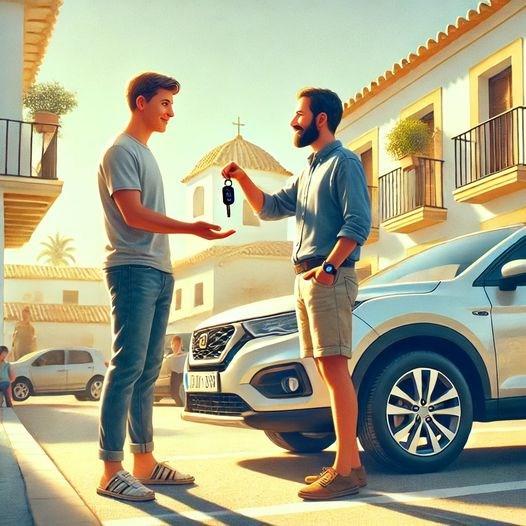
Car Registrations Spain S.L. is the leading vehicle registration service of pre-registered foreign vehicles in Spain. If you have a foreign registered vehicle that you would like to register on to Spanish plates or think we can be of service, please don’t hesitate to get in touch with a member of our team.
info@car-registrations-spain.com
+34 868 990 576
+44 (0)2380 200 706
https://www.facebook.com/carregistrationsspain/
https://quote.car-registrations-spain.com


by Car Registrations Spain
Are you looking to register your foreign motorbike in Spain? Look no further! At Car Registrations Spain we offer a fully managed service to get your bike on a new Spanish plate with zero hassle.
✅ Free Quote
✅ Technical Paperwork
✅ ITV Import Test
✅ Customs Clearance (if required)
✅ New Spanish Number Plates
✅ New Spanish Documentation
✅ Fully Managed Service
We handle all the complexities, so you don't have to! Enjoy the ride while we take care of the rest.


Contact us today for your free quote and get started on a smooth registration process!
https://quote.car-registrations-spain.com
As a complimentary service we can also provide you with very competitive insurance pricing for your vehicle and can also cover UK vehicles pre-registration. –
Car Registrations Spain S.L. is the leading vehicle registration service of pre-registered foreign vehicles in Spain. If you have a foreign registered vehicle that you would like to register on to Spanish plates or think we can be of service, please don’t hesitate to get in touch with a member of our team.
info@car-registrations-spain.com
+34 868 990 576
+44 (0)2380 200 706
https://www.facebook.com/carregistrationsspain/
https://quote.car-registrations-spain.com



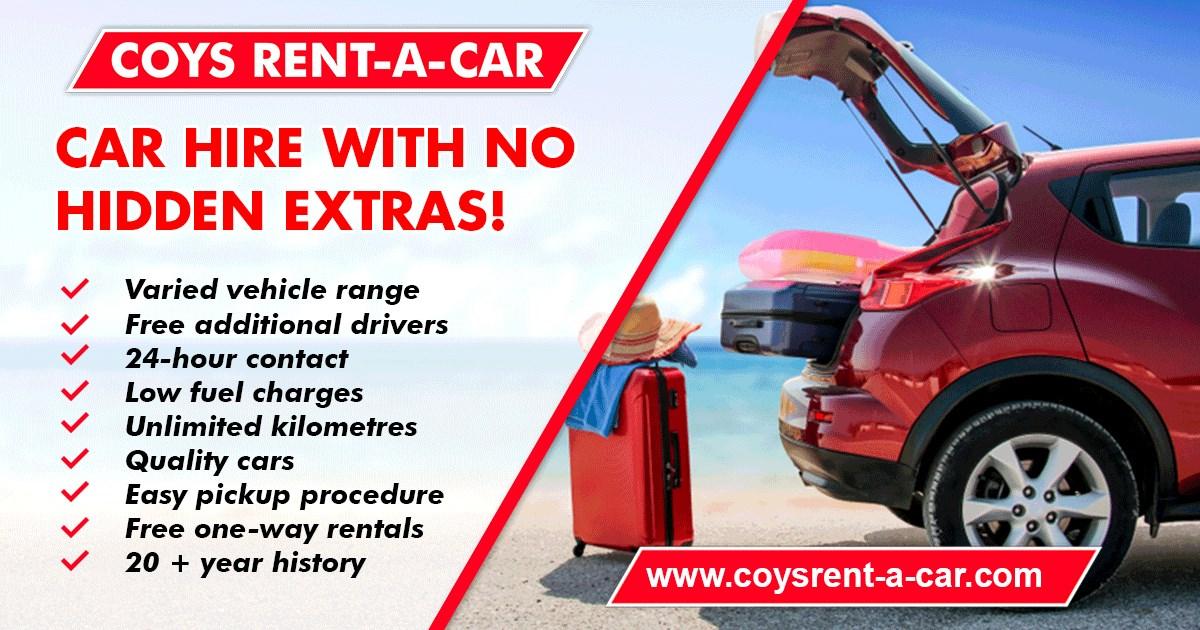


The question of driving without a shirt always comes up during summer, and although the law does not expressly prohibit driving topless, as the General Directorate of Traffic (DGT) explains, it is a very dangerous act and can be dangerous when driving, and therefore, can result in a fine.
The código de circulación, the laws relating to driving, explains in articles 3.1, 17.1 and 18.1 that any action that prevents safe driving for both the driver and the other occupants of the vehicle must be sanctioned. That is why both practices of inappropriate footwear and not wearing a shirt can result in a fine.
According to the DGT, driving without a shirt is dangerous, since it could cause injuries if the seat belt is activated, as the seat belt will be in direct contact with the skin. Driving topless can result in horrific glass injuries in the event of a collision and can even result in sunburn. In addition to making driving difficult, it can be a major mishap for the driver in the event of a breakdown or accident. This obviously applies to all vehicle occupants, not just the driver.
The sanction can vary depending on the risk perceived. If your actions are considered minor, and not very dangerous, you could face a fine of 80 euro, but if the officer considers that the risk being assumed is greater, you can face a fine of up to 200 euro and the withdrawal of three points on the driving licence.
Remember also that you must maintain the correct posture when driving, or when travelling as a passenger, which is why putting your arm out of the window, or if a vehicle occupant puts their feet up on the dashboard, which is an extremely stupid thing to do as the injuries in the event of a collision would be catastrophic, not being secure in the vehicle, whether that is you, your passengers, goods, or animals, and not being properly dressed, can all result in a fine.

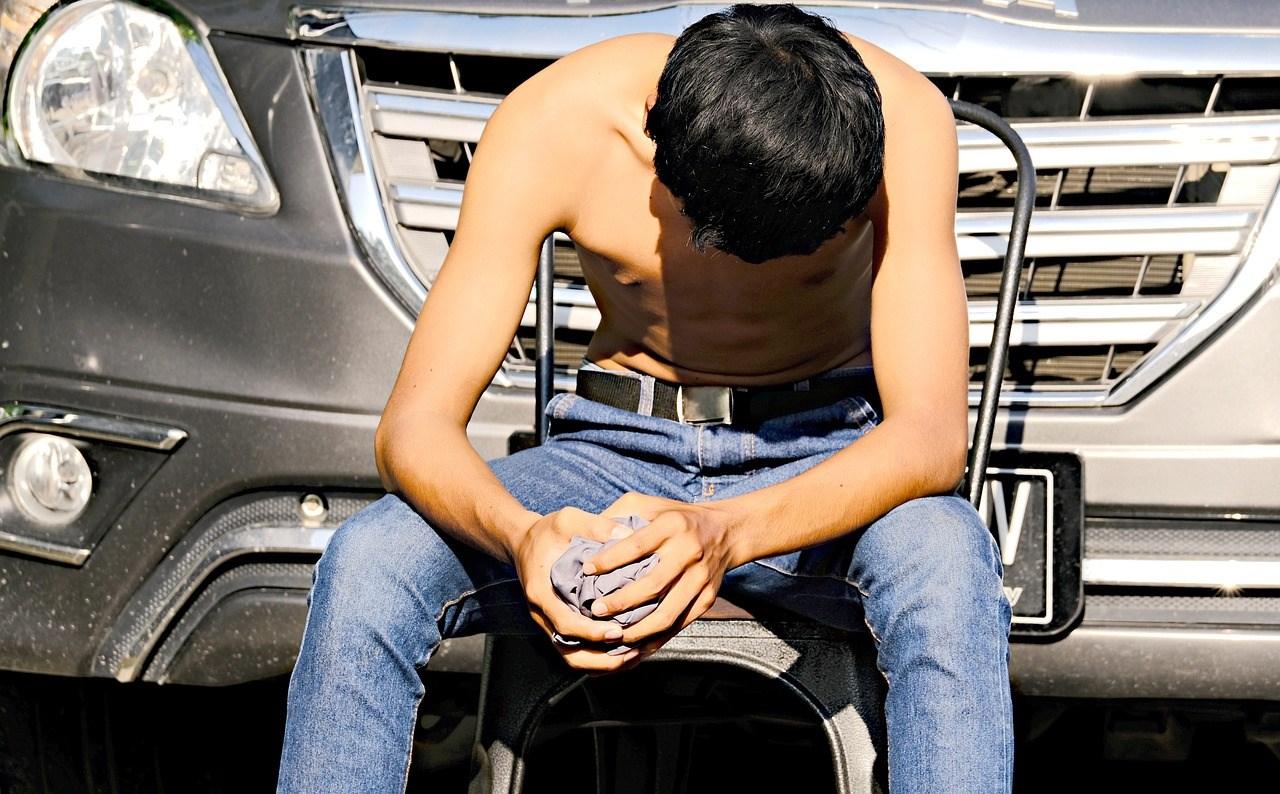
When driving on summer roads, it is not uncommon to see the driver waving their arm out the window, often to cool down or to feel the flow of the breeze of the open road, but this sort of activity is not permitted, because it is both dangerous and potentially confusing to other road users.
Article 18, Section 1 of Royal Decree 1428/2003 of 21 November, approving the Rules of the road, states that “The driver of a vehicle must maintain their own freedom of movement, the required field of vision and permanent attention to driving“, which covers a whole multitude of sins (and potential fines).
Keeping both hands on the steering wheel, not leaning with an elbow on the window, keeping your arms inside the vehicle may have been the repetitive messages our driving instructor taught us when we first took lessons, but the advice is still very much key to a safe driving experience.
There are countless documented cases of motorists suffering serious injury when “clipped” by a passing car, as well as the more gruesome stories of the loss of limbs in the event of a crash. Having an arm out of the window also poses a risk to other road users such as cyclists and motorcyclists. Being able to put your head out of the window implies that the seatbelt is not worn correctly. If your body parts are not within the safety cage of the vehicle, then you are at risk and are risking others.
Arms extended from the vehicle may also confuse other road users who might think that you are giving hand signals, thus posing a risk that those drivers may incorrectly react to what they think you are gesturing. Visibility may also be obscured as a result, blocking the vehicle´s mirrors and making it difficult to observe the vehicle surroundings correctly.
An arm outstretched to the left actually means you intend to turn left. It is a hand signal which may be used in the event of your indicators not working, for example. Your left arm out the window and at a right angle means you intend to turn right. Extending your arm out of the window with your palm facing backwards means you intend to reverse.
We will be publishing the hand signals, with pictures and a video, on the website, n332.es, and Facebook, during September. We will also publish them in the next edition of this magazine, so that gives you something to look forward to!



There are many beaches now in Spain which are dog-friendly, but in order to get to those beaches often involves driving, and therefore it is important to know how to keep your dog safe in the vehicle.
Firstly, just like everything else, animals must be secured in the vehicle. However, there is an additional rule, in that they must not be able to interfere with the driver in any way.
A common appearance on the roads in summer is a beloved pet being carried sat on the lap of a front seated passenger, totally unrestrained, other than perhaps the hands of the human upon it. This is extremely dangerous, especially for the animal, and with that in mind, you will perhaps not be surprised to hear, illegal.

There is a specific offence of having insecure animals in the vehicle, which is punishable by an immediate fine of 80 euro.
Having an animal in the vehicle that could interfere with the driver is dangerous, so a dog sat loose on the front seat for example is not allowed. Carrying animals which are not properly restrained is dangerous to them too.
Allowing your dog to hang out of the window, which might be a favourite past time for some, is not allowed, as it is dangerous to the animal, and can interfere with the overall visibility.
In terms of keeping an animal secure, then they can be placed inside a case, cage, or box, for example, but then that device must also be properly secured to the vehicle. You can but specific dog straps which attach to the seat belt fixtures in the vehicle. These are allowed, so long as the animal is secure and there is no way it can reach the driver, so again, the front seat id most likely not the best place.
Animals are unpredictable, especially in environments they are unsure of or not used to. If loose, they could interfere with the driver´s ability or visibility. In the event of a crash, the animal would suffer considerable injury and, most likely, death.
If you are on a longer drive and need to stop for a call of nature, then again, you must ensure that the animal is secure and not able to run into the road. In strange an alien environment, animals can behave unpredictably, and so you must ensure that you have control at all times, never allowing the animal to run freely.
A new novelty which is covered by the Animal Welfare Law, rather than Traffic Law, is that animals cannot be walked from a vehicle. IN other words, if you have a dog on a leash and are riding a bike, or traveling in a car, it is not permitted for the dog to walk alongside you in that circumstance.
The three-point seat belt, which is fitted as standard to most modern vehicles, has an upper (thoracic) and a lower band (pelvic). Both must be snugly fitting against the body. For the seat belt to offer maximum protection it must be on the hard parts of the body, leaning against the collarbone, halfway between the shoulder and neck at the top, and the iliac crest of the pelvis, never on the abdomen.
Accessories such as cushions or other additions should not be used. Once you have pulled the seat belt across your body and secured the strap in the locked position, make sure that the seat belt is not twisted at any point. If it is, undo the seat belt and remove the twists. Once secure, pull the seat belt so that it fits snugly against the body, with any slack being taken back at the top.
If the seat belt is not worn correctly, it can cause further problems in the event of a collision. For example, if the upper band is taken off the shoulder, it can cause a head impact with the windscreen, dashboard or seat in front. It can also produce cervical lesions.
If the belt is not firm around the body it can cause the vehicle to slide under the belt, casing lower body and spinal injuries. This is often referred to as the “submarine effect”. To prevent “submarining”, the vehicle occupants must also sit in a proper position when riding in the vehicle, with the seat belt securely fastened as mentioned, and without having any additions such as pillows or cushions which may contribute to the reduction of effectiveness of the seat belt.
There are other rules regarding children in cars. Primarily, children under 1.35 metres in height are not allowed to travel in the front seats and they most use an appropriate restraining system for their height and weight.


Dogs die in hot cars! The message could not be simpler to understand, and yet, all too often, we still see dogs left locked in cars, which can have fatal consequences very quickly, especially in the summer months.
If you are a dog owner, please do not leave your dog locked in the car. However, the question is what to do if you see a dog locked in a car, because, as we have already established, it still happens.
The answer is to call the emergency services immediately, the easiest way of doing this is by dialling the 112 emergency number from any phone. Before you do this, you must get a clear indication of the location, such as the street name, or names, or the name of the building for example, in order to speed up the response.
Dial 112, where they speak a number of different languages, explain what you have found, in other words the dog in a car, and then give the location. You may also be asked a number of questions related to the matter so be prepared to answer.
That is it. That is what you have to do. What you must not do is attempt to free the animal yourself by breaking the window of the car for example. Despite claims made for many years on social media that you cannot be prosecuted for damaging a car in these circumstances, it is not true. These claims are false. You cannot break into a vehicle for any reason, including to rescue an animal.
The only legally permitted course of action if you see a dog in such a state is to call for assistance from the police or Guardia Civil.
If you are able to speak Spanish, you can also summon the Local Police, who may be able to respond quicker, by calling 091 or 062, but if not, the emergency coordination centre on 112, where operators speak multiple languages, but under no circumstances should you put yourself at risk of prosecution by taking the advice shared through these erroneous social media posts.

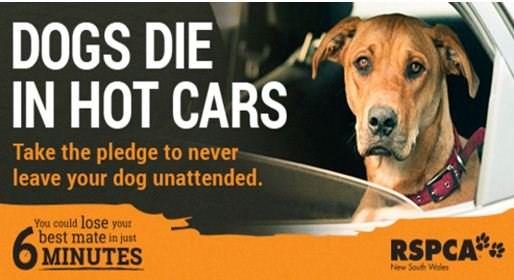




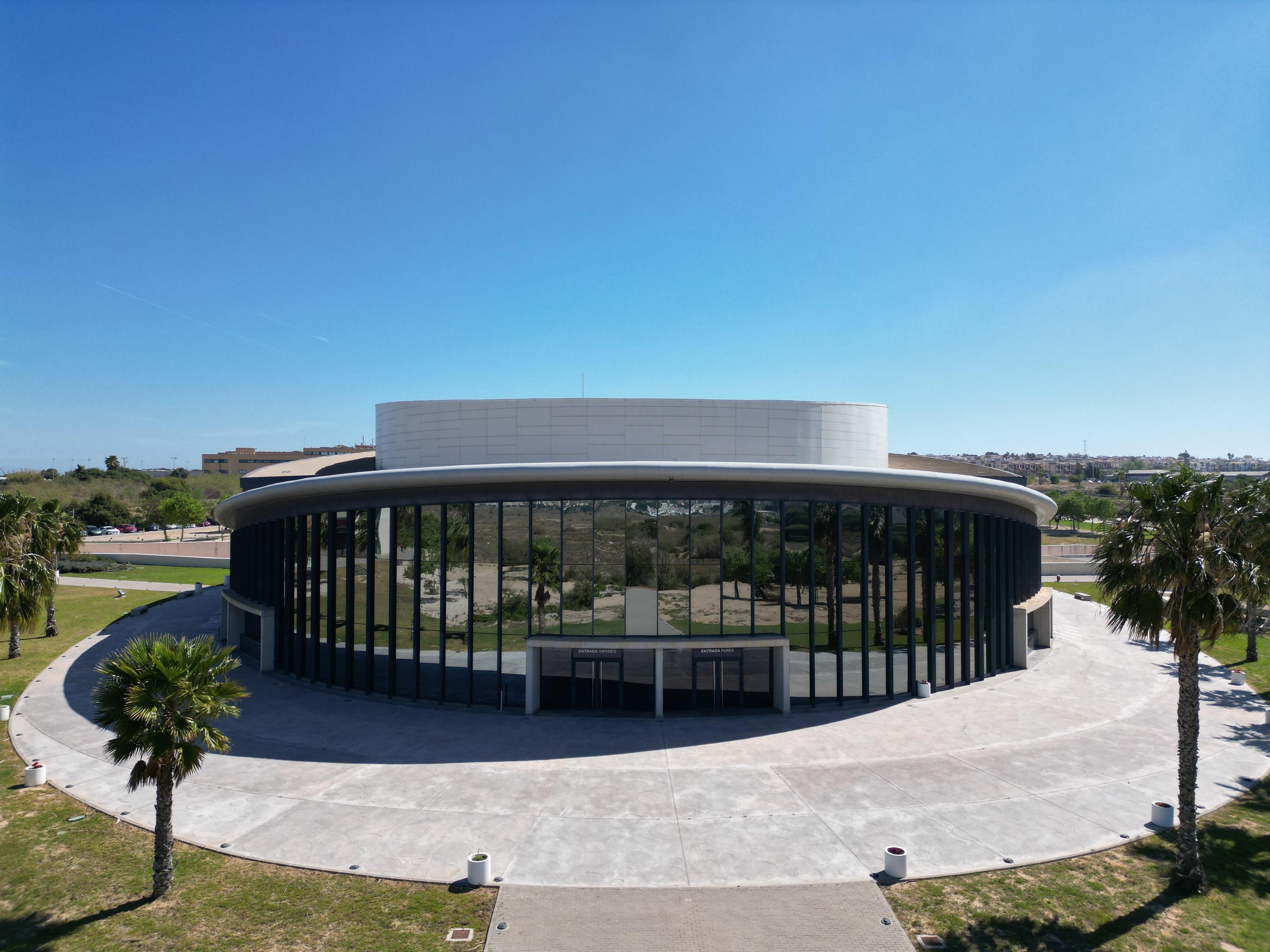


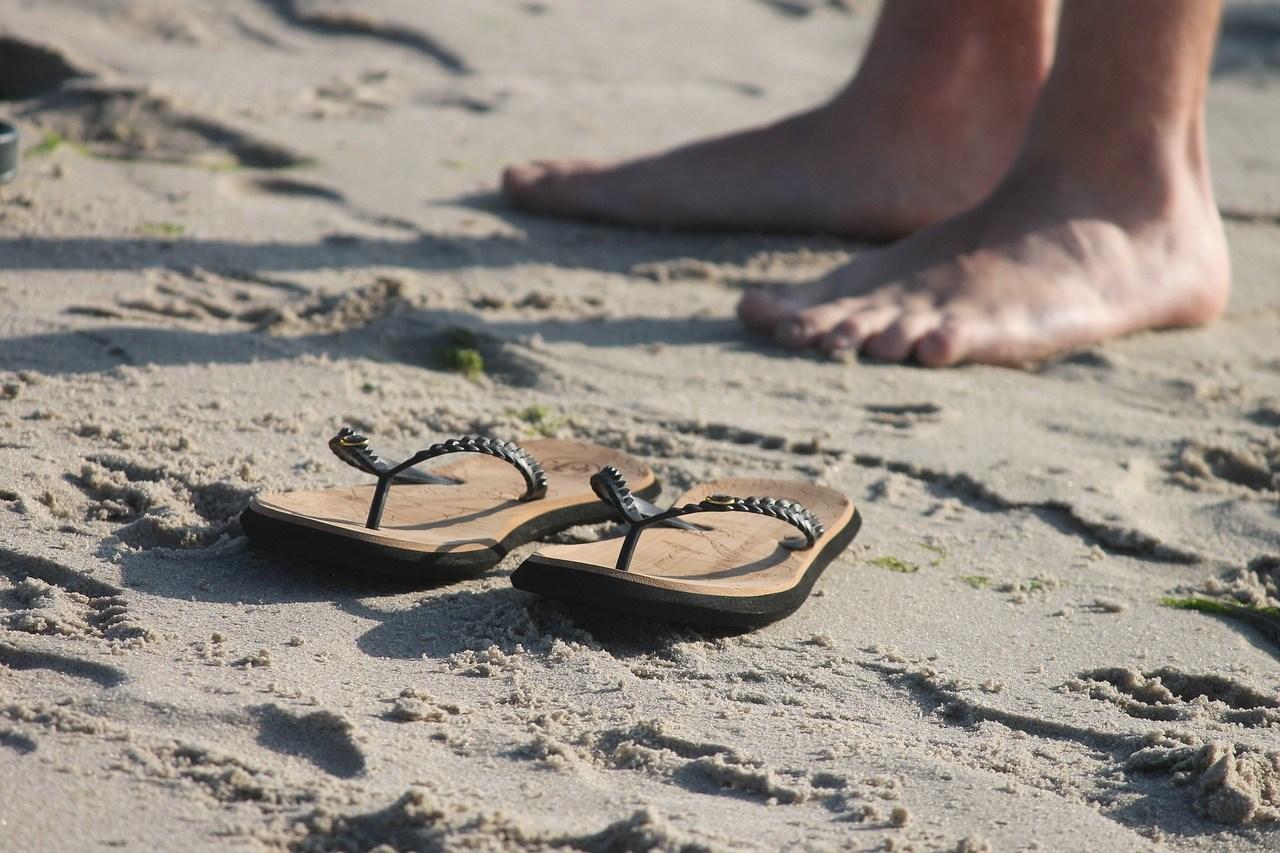
It wouldn’t be summer if the question of whether you are allowed to drive in flip flops didn’t come up!
Firstly, before we look at the law, you should not drive in flip flops because it can be extremely dangerous, as your foot can easily slip out of the shoe, especially when they are covered in sand, or wet. There are numerous cases of flip flops getting trapped between the pedals of vehicles, sometimes with devastatingly fatal consequences, which could so easily have been avoided by wearing appropriate footwear.
However, if we ask the question, is it illegal to drive in flip flops, then the answer is mostly no.
The reason that this second question leads to an ambiguous answer is that there is no specific law which says you must not drive wearing flip flops. However, there are laws which dictate that as a driver you must always be in full control of the vehicle. If you are wearing inappropriate footwear and are involved in an incident, a collision, or are caught committing an offence, then it can be immediately deduced that you were not in full control of the vehicle, in which case your inappropriate footwear, flip flops for example, can be taken into consideration, and can therefore see you with an additional fine.

Wearing appropriate footwear is a must when driving. When you think about the physical process required to make a vehicle go, turn, or stop, all the actions are performed by our hands and feet.
If we consider a driver who is barefoot, for example, there is nothing illegal about this, but controlling the clutch, and even the brakes, can require a lot of pressure, which may prove difficult if a driver is barefoot. Feet can sweat and reduce the traction and wearing of socks or stockings is not ideal either, on account of the pressure needed.
Flip flops and sandals are considered by far the most dangerous of all inappropriate footwear. Shoes which don´t fit securely may fall off when driving and can get in the way of the pedals as we have explained. Equally dangerous is how the foot can slip whilst the shoe remains in contact with the pedal, thus reducing braking time and causing a considerable risk when stopping.
When the Spanish Catalogue of Road Signs was recently added to, with some existing signs being updated and modernised, there were also some new, never before seen signs incorporated, and of those, one is seemingly causing some confusion for drivers as to the meaning.
The new sign in question is officially known as the P-35, a triangular shape with red edges, so it indicates caution, a warning. Inside, two cars appear in parallel with arrows at the top that intersect.
It is perhaps no surprise that there is some confusion, as the description of what the sign means is “danger due to the proximity of a section between a confluence and a fork where different lane-changing movements occur by vehicles, crossing their trajectories and therefore increasing the risk of collisions occurring.”
However, there is good news, because it´s nowhere near as confusing as it seems, especially given that although the sign might be new, the situation it is warning about is not, and there is a high probability that you would have driven through a section in question.
The most likely location of this sign is on motorways, and specifically where two motorways merge. The sign will not appear in all cases of this, just where there has been an identified increased risk, hence the added warning.

When motorways merge, there is a long area from where the lanes first meet, to where the number of lanes reduce to form the continuation of the road. Vehicles merging onto the main motorway need to slow down, if necessary, indicate to join an outer lane where appropriate, and then continue along the normal driving lane of the new road.
The General Directorate of Traffic has advised drivers to exercise extreme caution when they see the P-35 sign to avoid typical rear-end collisions that occur during this manoeuvre.


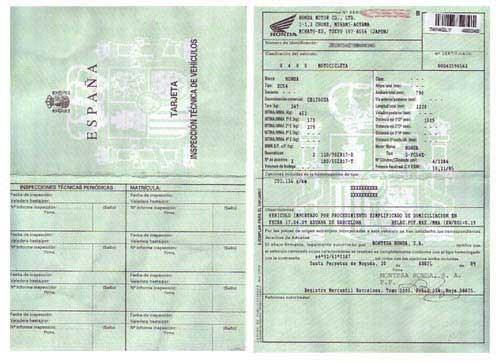
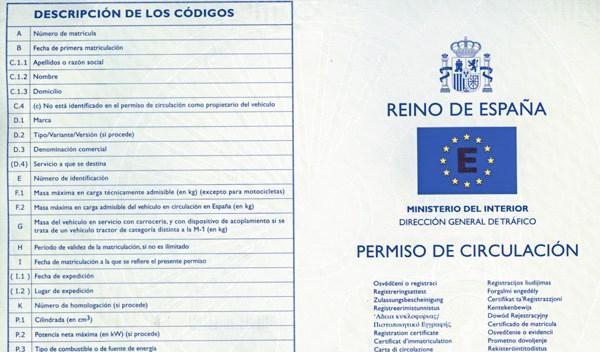
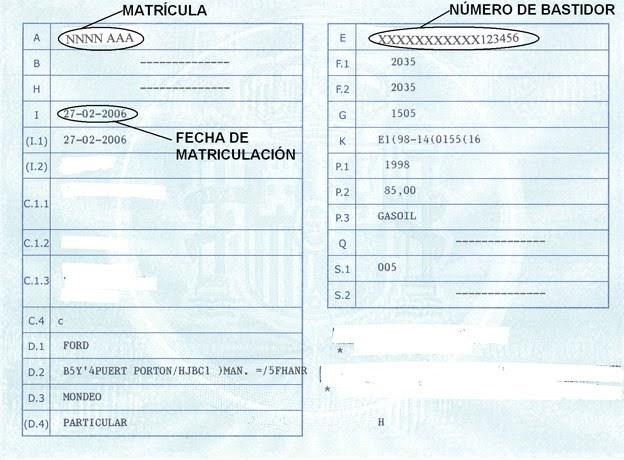


As a driver it is mandatory to carry your driving licence with you if you are driving, as failure to do so may constitute a criminal offence. If you have a Spanish driving licence, you can potentially access the Mi DGT app on your mobile phone, which can be used as a substitute for your actual licence, and you can carry a notarised copy. These are the only valid alternatives.
As for the vehicle, it is mandatory to carry the “permiso de circulación”, a document which we may refer to as the “logbook” of the car. This document contains information such as the vehicle registration number and the characteristics of the vehicle.
Next is the “tarjeta de inspección técnica”, or the ITV card. This document contains the technical characteristics of the vehicle and the schedule of mandatory inspections. Some very modern vehicles don´t have this card as they will be phased out over time and replaced by a digital version, but if your vehicle has one, then it must be carried in the car.
We must also carry the latest ITV inspection report, as issued by the test centre during the last inspection, unless your vehicle is not yet old enough for the test. This will provide details of the inspection and if any faults were detected during that test.
For Spanish registered vehicle, it is not mandatory to carry your insurance documents, but it is advisable to carry proof of your insurance, including the policy details, as you will be required to exchange these with another driver in the event of an incident. If you are visiting Spain as a tourist, you will be required to carry your insurance documents as you may need to produce these.
It is also advisable to carry the “European Accident Report Form” which you can obtain from your insurance company. This form is available in many different languages and is set out the same in each, thus allowing you to complete the necessary details with another person who doesn´t perhaps speak the same language as you.

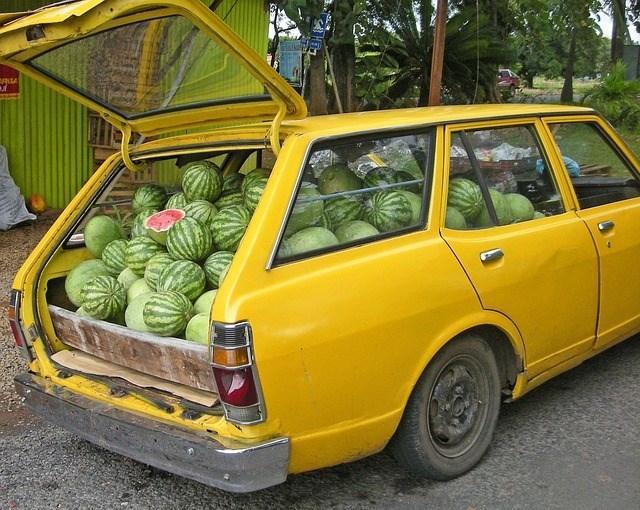
Everything we carry in our vehicles must be carried correctly, and by correctly, we mean it must be secured, and it must not protrude from the vehicle. Also, all vehicle doors, which includes the boot, must be securely closed.
The reason we say this is because another common occurrence on the roads at this time of year is vehicles which are overloaded, not necessarily by weight, but by volume. There are far too many occurrences when cars are going to or from the beach and are filled with all of the paraphernalia for a day in the sun, like the picnic box, towels, of course, and then perhaps a marque, or tent, inflatables, a surfboard, a table and chairs… The list can go on.
If you are driving a vehicle that is carrying a load in the car, you have to make sure that the load is restrained properly. Load restraint is not just about making sure that the load does not come off, it is also about making sure that the load does not shift in a way that makes the vehicle unsafe to handle or allows the load to crash into the driver’s cabin, which may cause injury or death.
The weight of a vehicle load can impact the performance and manoeuvrability, and so you may also need to adjust your tyre pressure. Check the manual for specific information relating to your vehicle.

The Spanish Traffic Law requires that any load carried on or in your vehicle must:
Not be placed in a way that makes your vehicle unstable or unsafe.
Be secured so it won’t move or fall from your vehicle while driving including driving consisting of emergency braking or turning suddenly.
Not project from your vehicle in a way that is likely to injure a person, obstruct the path of other drivers or pedestrians, or damage another vehicle or anything else.
Be restrained using an appropriate load restraint method. Anything on the back seats must be secured with seat belt.
It is advisable that you use the boot, rather than the saloon. In case you need to carry load in the vehicle, use the seat belt to ensure the load, and if you carry heavy things, use a car net, it is forbidden to take heavy load without a load restraint net.
In the case of inflatables, take them uninflated.
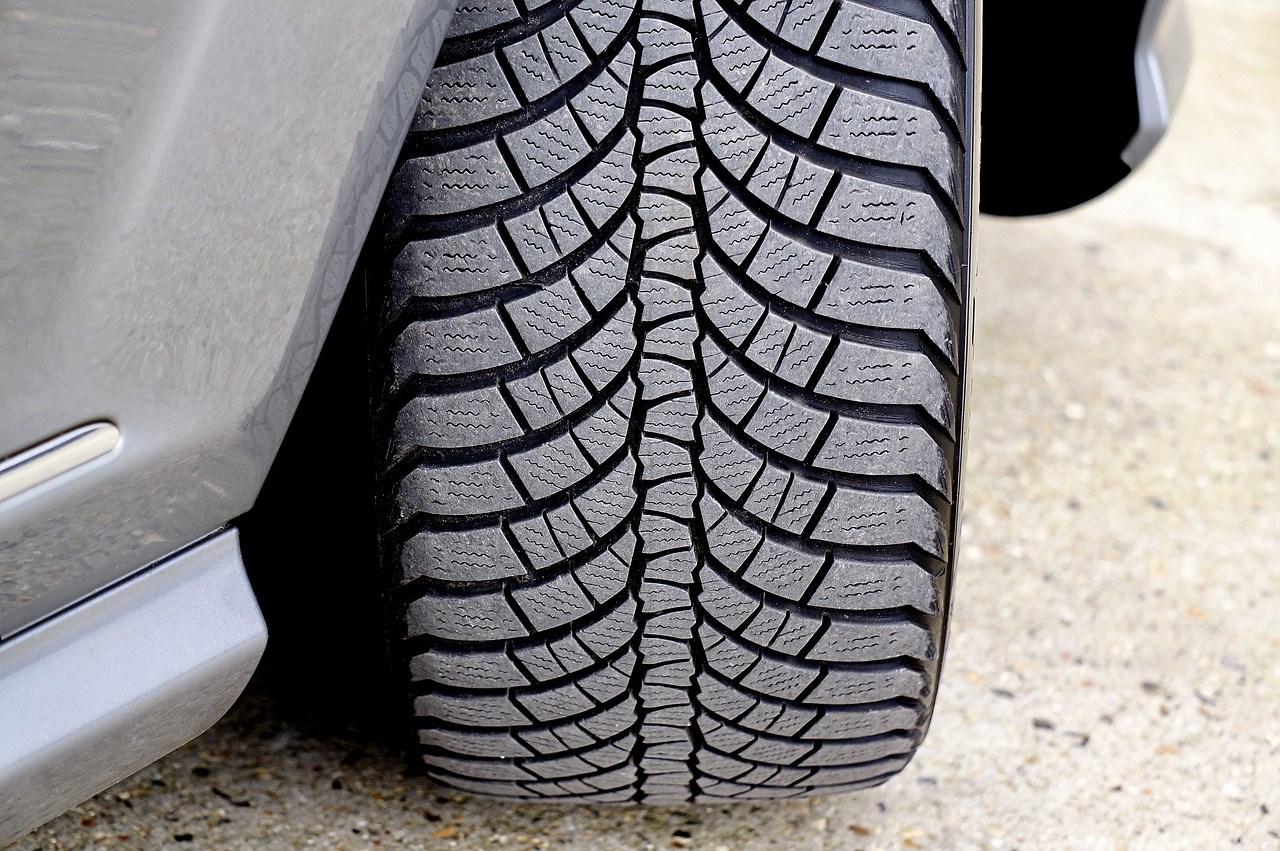
If we asked, what do you think is the most important part of any vehicle, what would you say?
Depending on your mindset, you might say the engine, the colour, the make or model, but when it comes to safety and performance, one really important part is the tyres.
The tyres are generally the only part of the vehicle in constant contact with something immovable, the road, they add to the comfort, and they are a huge contributor to safe driving.
But, if they are not cared for, the opposite can be true, from simple (but costly) minor problems like increased fuel consumption, or a rough ride, to potentially dangerous situations like blowouts, reduced braking efficiency, and even crashes or collisions.
That is why it is vital that you check your tyres on a regular basis, at least monthly, and before any long drive or holiday period, like the summer season we are about to enjoy.
There are many things you should check, such as the tread, that it is not too worn, and is even.
You should feel the tyre with your hands, including the side of the wheel on the inner side of the vehicle, checking for bumps or uneven surfaces.

Look closely for objects that could be embedded in the tyre, or any signs of damage.
Check that they are properly inflated, as per the manufacturer's instructions, and based on the load you are carrying. If you are normally a single occupant for your daily commute, but about to pack the family, the dog, and as many belongings in your car as you can for a summer holiday, the weight and dynamics will change.
Tyre pressure should always be checked when the wheels are cold, so before a long journey.
Modern vehicles have a plate, usually in the door frame, which gives you this information.
There are other characteristics of tyres that you need to check, but we will look at those another time so make sure you are following our Facebook page, today, in preparation for summer, we want you to look at these basics, and start to get into a good habit of checking monthly, at least.
Finally, on this note… Don’t forget to check the spare (or the emergency kit, depending on your vehicle).
If you have any doubts, when it comes to the safety features it is always best to err on the side of caution and consult a qualified and specialist garage or workshop.




As we have been talking recently about new and more advanced radars to catch speeding motorists, it´s probably a good idea to talk once again about the speed limits on the roads of Spain.
All roads in Spain have a maximum permitted speed limit. However, that limit not only varies depending on the characteristics of the road, but also the type of vehicle, and (in some cases) the driver.
As always when we talk about speed limits we must offer the same reminder however, the maximum permitted speed is exactly that, a maximum, it is not a target and the actual safe speed may be much lower depending on the road and weather conditions.
That said, here is the overview of the generic maximum permitted speed on the roads by vehicle type, unless signs say otherwise.
The maximum generic speed for cars and motorcycles on motorways is 120 kilometres per hour. On secondary roads, the maximum permitted speed is 90 kilometres per hour.
Buses, and other vehicle derivatives that have been adapted, must not exceed 100 kilometres per hour on motorways. On conventional roads, the maximum permitted speed is 90 kilometres per hour. On other conventional roads out of town they cannot exceed 80 kilometres per hour. In the event of a bus carrying standing passengers (where permitted) the maximum permitted speed, whatever the type of interurban road, is 80 kilometres per hour.
On motorways and highways, trucks, articulated vehicles, tractors and vans cannot exceed 90 kilometres per hour. On conventional roads outside of towns, the maximum permitted speed is 80 kilometres per hour.
Any vehicle which falls into this category, namely a bus carrying school children and displaying the yellow school bus sign, or a vehicle carrying goods classed as

dangerous, the maximum permitted speed must be reduced by 10 kilometres per hour.
The maximum permitted limit on motorways and highways is 90 kilometres per hour when towing a light trailer (which has a maximum mass less than or equal to 750 kg) and 80 kilometres per hour when towing a non-light trailer (greater than 750 kg). On conventional roads the maximum permitted speed is then 80 kilometres per hour.
Vehicles with three wheels or “quads” have their speed limited to 70 kilometres per hour on any type of road where they are permitted to drive.
Cycles, two and three wheeled mopeds and light quadricycles have a maximum speed of 45 kilometres per hour where permitted.


Are Motorbikes Required to Carry the Emergency Light V16?
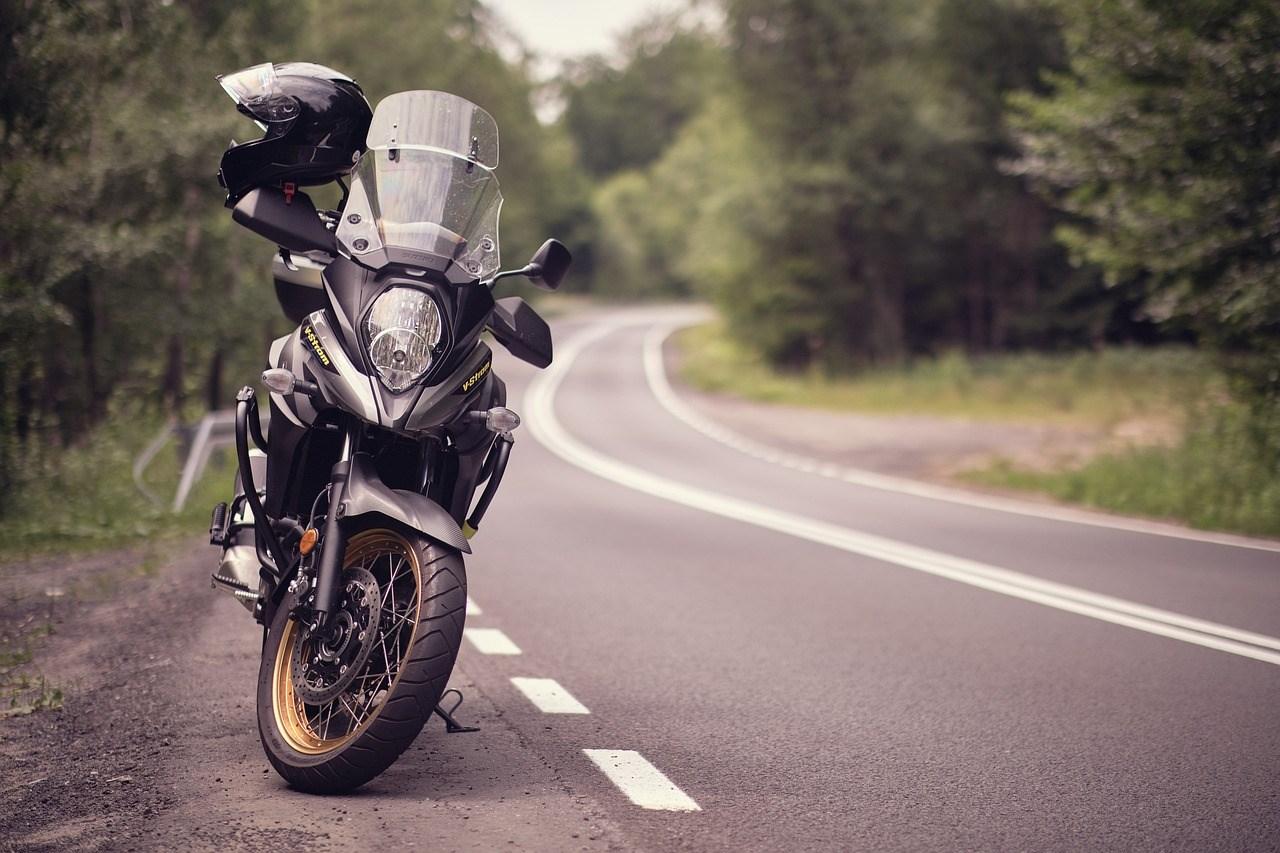
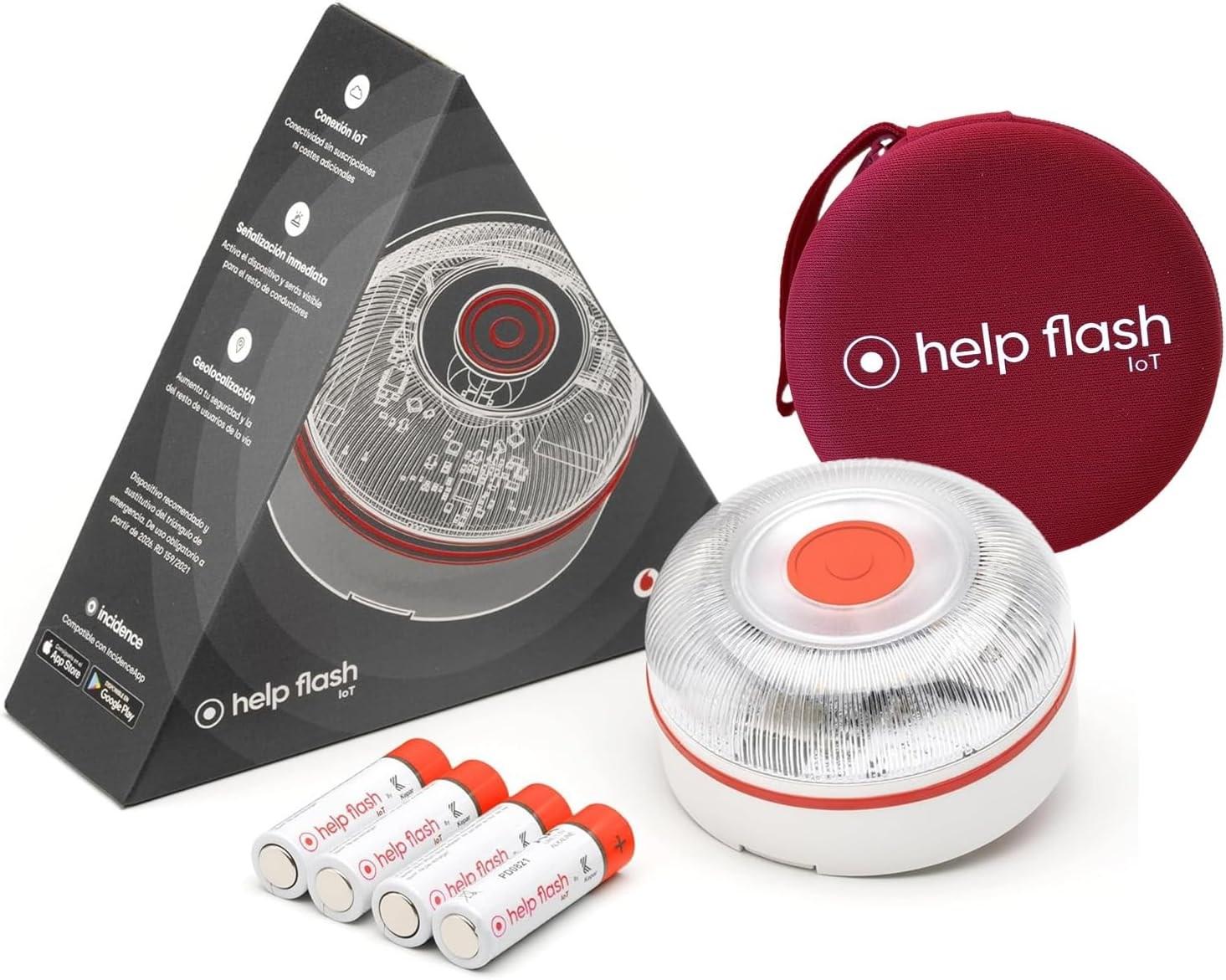


From 1 January 2026, it will be mandatory for most vehicles to carry the V16 emergency light, which replaces the warning triangles. At the moment, during the transition period, you can use either. From that date, only the connected lights will be permitted.
More specifically, passenger cars, buses, mixed vehicles and vehicles used for the transport of goods must carry this luminous beacon which, in the event of an incident on the road, will allow them to be visible both physically and virtually to other road users in a safe manner.
As motorcycles are not mentioned, is it necessary for them to carry the V16 light?
The answer is no. Bikers are not required by law to carry this device. That said, they are small and easy to carry, and so it is recommended. Due to their size, triangles were never an option for motorcyclists. However, the V16 light, due to its compact design and low weight, can be carried in a backpack. In addition, its magnetic surface allows it to be placed on various parts of the motorcycle.
The reason for the connectivity that the V16 light has is that when it connects, it sends a notification to the DGT traffic control centre indicating the exact location of the vehicle. Thus, the DGT 3.0 Platform allows you to share your location with the rest of the road users. In this way, drivers will be able to have information in advance about any incident along their journey, a notification that will not only appear on the variable information panels on the different roads but will also be in the mobility applications on their phones.
It is also important to note that the mandatory use of the V16 also means that the light itself has to have gone through a testing process, and so only those lights certified and approved by the DGT can be used.

Summer is here, which means busier roads, and for some it means an upgrade in the type and size of vehicle they normally drive, as many tourists take to the road in a portable mini house on wheels, otherwise known as a motorhome.
You might not be in the position to buy a motorhome, but rental has become increasingly popular, and so if you are considering embarking on a road trip in a campervan, you need to know a few extra rules.
Motorhomes and campers offer greater comfort and flexibility compared to towed caravans. In addition, there are differences in regulations between the two types of transport.
In a motorhome, there are no restrictions on passengers travelling inside, as long as the number of seats allowed in the vehicle's registration is not exceeded. Both in the cabin and in the passenger compartment, the use of a seat belt or an approved restraint system is mandatory.
Regarding speed limitations, approved motorhomes have the same as passenger cars, although the DGT recommends moderating the speed due to their considerable size.
Another of the most frequent questions among users interested in renting a motorhome is, without any doubt, about parking and/or camping, having different rules to follow.


A motorhome is considered parked when it is parked in a permitted place, without exceeding the road markings and without the activity inside transcending to the outside. This includes not deploying items such as awnings or stabilisation supports, and that perhaps obviously to some includes places chairs and tables outside, none of these actions are compatible with being “parked”.
Camping, on the other hand, is only permitted in designated areas, such as campsites or parking lots designated according to the regulations of each autonomous community. Otherwise, you would be exposed to a fine.
Camping on the coast: Prohibited by the Coastal Law, with penalties from 40 euro per occupied square metre.
Camping in protected areas: Parking in protected areas is prohibited and will result in severe penalties. Therefore, to avoid this penalty, find out in advance which places are authorized for campers.
Illegal parking: Consult municipal ordinances to avoid infractions that can vary between 100 and 200 euro.
Staying overnight or camping: Sleeping inside a motorhome or camper is permitted unless otherwise indicated. Camping, that is, occupying outdoor spaces, is practically prohibited except in areas explicitly designated for it.

Many of the rules for caravan use are the same as we have explained in relation to motorhomes, but there are some extra requirements.
Like a motorhome, a caravan is considered “parked” when it is parked in a permitted place, without exceeding the road markings and without the activity inside transcending to the outside.
Camping is only permitted in designated areas, such as campsites or parking lots designated according to the regulations of each autonomous community.
Caravans are allowed to park and stay in any suitable place, but not to camp, i.e. no external elements can be deployed. In addition, they must remain attached to the towing vehicle.
All caravans, motorhomes and campers must be homologated, comply with tax requirements and respect the coexistence with other road users. Caravans with a weight of less than 750 kg are considered light trailers and only require the technical card from their first inspection. Those with a higher weight must comply with additional technical conditions and have independent insurance.
Unlike motorhomes, passengers cannot be carried in the caravan when it is being towed.


The most important thing to keep in mind when traveling in a caravan or with a trailer is the need for additional driving licence categories, which depends on the MaximumAuthorised Mass (MMA).
If the MMA is less than or equal to 750 kg, no additional permit is required, so a B driving licence is sufficient as long as the car and caravan do not exceed 3,500 kg. As regards registration, it is not necessary to register the caravan, it is only necessary to have the car's registration number in a visible place on the back of the caravan, along with repeater lighting.
For its part, for a MMA greater than 750 kg, authorisation B96 is required, which allows the transport of trailers of more than said mass as long as the set (towing vehicle and trailer) does not exceed 4,250 kg. For those sets that exceed this limit, the B+E permit is required. In addition, the trailer must be registered and have its own number plate (red), as well as that of the towing vehicle on the back, and lights of course.
Unlike what happens when the MMA is less than 750 kg, in this case, with a MMA greater than said figure, it is necessary to take out extra insurance to travel with the trailer.
As regards speed limits, caravans have specific limits depending on the type of road they are travelling on. If they are on a motorway or dual carriageway, the maximum speed allowed is 90 km/h, and on open conventional roads the limit is 80 km/h.
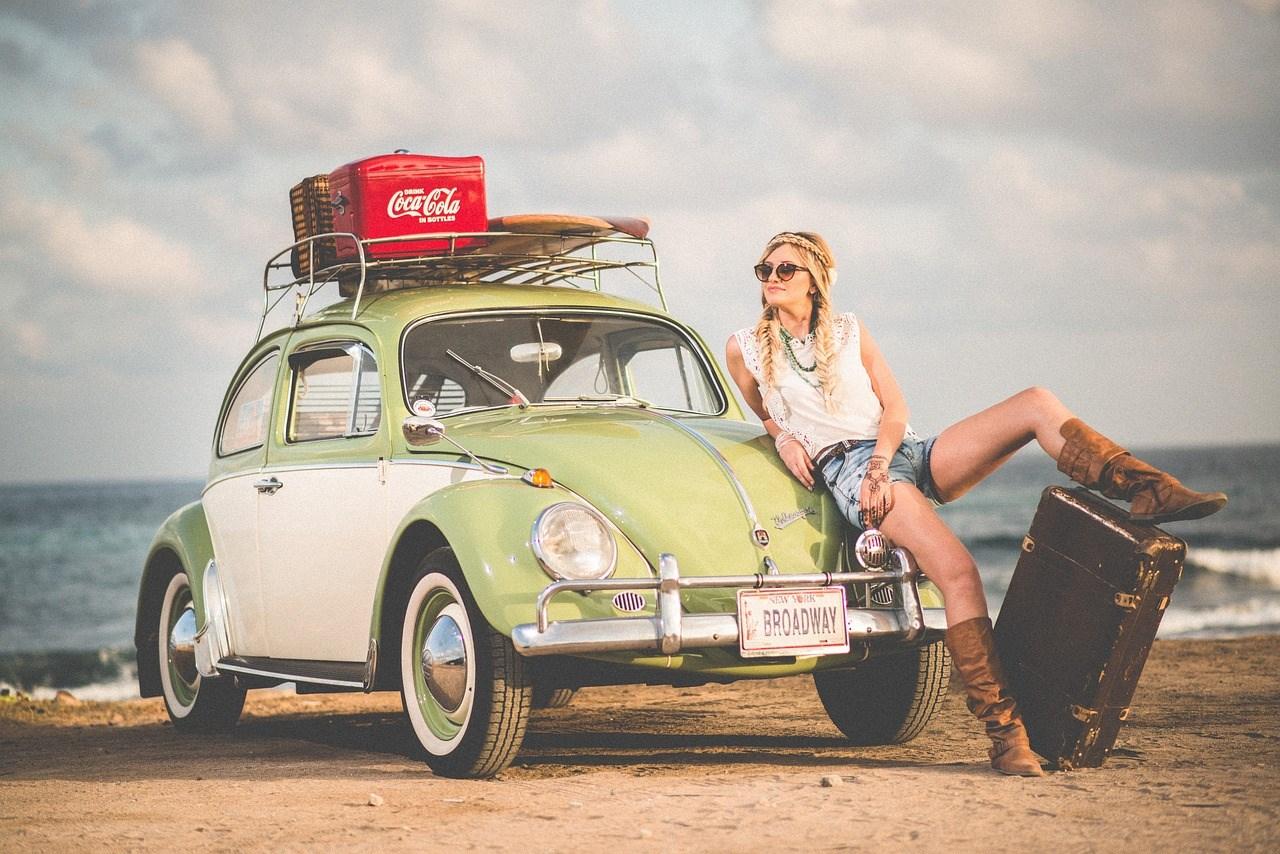
For many people, the beach is the protagonist of summer, and to get there, the car is the star, but unfortunately, the beach and cars are not a great mix, so we have to be a little conscious of making sure that our car doesn’t suffer any adverse effects, particularly those caused by sand or saltwater.
Firstly, please do not drive on the beach. We will not go into the reasons why at this stage, but please, just don’t do it. Trust us!
What to check after returning from a trip to the beach?
You don’t have to do this every time you’ve been to the beach, but depending on the length of your stay or holiday you would benefit from doing these things more frequently.
The important thing is to thoroughly wash the car, both outside and inside, to remove any remains of salt and sand that may have remained under the vehicle or inside the cabin. Any grain of sand that remains on the bodywork or on the seat fabric can gradually erode the materials, just as happens with salt that remains adhered to the shock absorbers, the brake system or, in general, in the lower part of the vehicle and can cause corrosion.
Tips for removing sand and salt from the car
One of the best ways of cleaning your car is with a high-pressure water gun, such as those found at petrol stations and car washes, and applying it directly to the entire body, paying special attention to the underside of the vehicle and the brake system.
Apply only water (no soap or added wax) to the parts of the car that may have accumulated the most sand, such as the brake callipers (if the discs or callipers are not cleaned, the sand can damage them and create a groove), springs, shock absorbers, suspension arms, ball joints and wheel arches in general. Once you have done several passes, you can apply the soap and then wax the car.
Do not bring the water gun too close as it can damage some elements of the car, such as the ABS sensors. A distance of about 30 centimetres is enough for the pressure to have its effect on the sand and salt.
It is also advisable to open the bonnet and see if the engine has accumulated any kind of sediment. In this case, use a compressed air gun to remove any sand residue. Once you have covered this step, you can wash the engine, but remember to always use distilled water. This will prevent damage to the battery or alternator.
It is advisable to dry areas where there are wet cables with a cloth or with an air gun. The rest of the body will dry as you drive the car.
If you have been on the beach for several months, in addition to giving your vehicle a good wash, it is advisable to change the air and cabin filters earlier than usual, as a good amount of sand and other types of dirt will surely have accumulated.



We probably realise by now that road signs adapt and new versions are added occasionally, and although some new signs are more obvious than others, if we don’t keep ourselves aware of what the new signs mean, we can easily become confused by some of the less obvious variants, such as the new sign officially called the S-70 in the catalogue of road signs.
What does the S-70 road sign mean?
To understand the meaning of the S-70 sign, we will begin by explaining that it is part of the 'Lane signs' in the DGT's Catalogue of vertical traffic signs. The 'Lane signs' are for indication and range from S-50 to S-99.
This DGT S-70 sign has a number of variants, the principles are S-70a and S-70b, as you can see in the image. The sign refers to traffic joining or merging onto an established road, from the left or right, respectively.
Specifically, the meaning of the S-70 is advising us of:
S-70a, merging of a lane on the left into a one-lane roadway: Indicates, on a roadway with one traffic lane, that a lane will merge on the left side.
S-70b: merging of a lane on the right into a one-lane roadway: Indicates, on a road-

way with one traffic lane, that a lane will merge on the right side.
Therefore, the S-70 sign warns of the moment when two lanes are going to merge and become one.
If you see the S-70, you should be careful and, having checked the road situation around you, prepare to adapt your speed and distance to other vehicles to prepare for the merge of the two lanes. Although vehicles on the main carriageway have priority, it is courteous to safely allow traffic to merge. It is also courteous to acknowledge and thank those drivers who offer this courtesy.
It is also important to check whether there are any additional signs to the S-70 sign and, above all, follow the road markings that will guide you before the lanes merge. There are also other variants: the S-71, S-72 and S-73
This sign also has three other variants: S-71, S-72 and S-73. In turn, these three variants also have two others, thus we have: S-71a, S-71b, S-72a, S-72b, S-73a and S73b.
The same principle applies to the S-70 with these variants, the only difference is the number of lanes on the main carriageway in the case od S-71 and S-72, two and three lanes, respectively, and the number of lanes joining in the case of S-73.
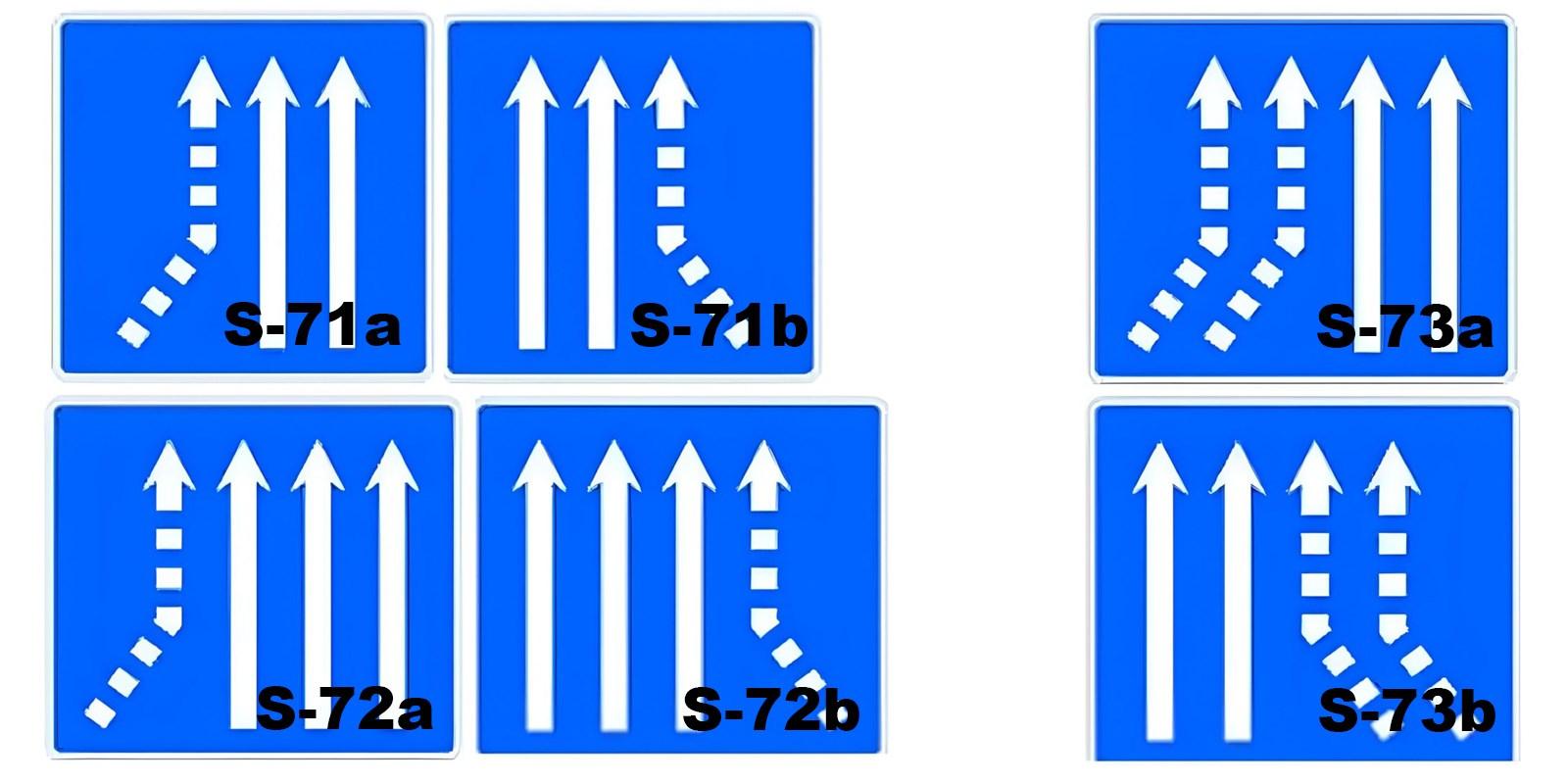

In Spain, there are various codes for the different highways, high-capacity roads and other routes that serve to control the network and keep it fully identified, something useful not only in the event of being in the middle of a trip, but also when suffering from some type of incident and it is necessary to recognise where we are.
The identifying signs will have a letter as a prefix, then numbers, and will have a different coloured background. Green refers to the European route number, and the prefix will be “E”. Blue is for motorways. A red background indicates it is part of the national road network, and the prefix in this case will be “N”, indicating national road, such as the N-332. The numbered signs with a brown background are those under the control of a regional body, such as the CV-905, the CV being indicative in this case of the Communidad Valenciana. There may also be other green-backed signs, again in this case with the regional prefix, which are second level roads under the control of the regional authority. Finally, yellow-backed numbers are third level roads under the control of the regional body.
The blue signs will have the letters A and AP that indicate, on the one hand, the autovías, which are motorways or high-capacity roads managed by the State, and, on the other, the autopistas, motorways which are sometimes managed by private operators and on which you sometimes, but not always, have to pay a toll. Sometimes, the sections of highways or motorways that bypass cities are also identified with the letter that refers to the city, such as the M-30 or M-40 in Madrid.
Then, there are the national highways, always denominated with the letter N followed by the corresponding numbering with a red background. From this level is when the first, second and third level roads begin to be named with orange, green and yellow colours.
The first ones are the most important highways of the autonomous community in question, the second level roads are also often referred to as provincial roads and the last ones, third level, as local ones. These roads usually have a single lane for each direction, they are found connecting towns or small towns that are not reached by high-capacity roads and do not have the characteristics of the former.

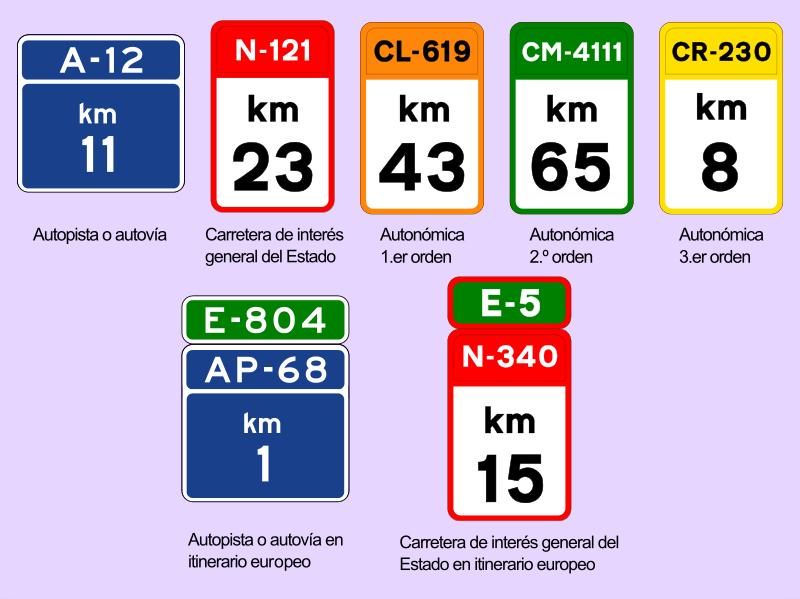

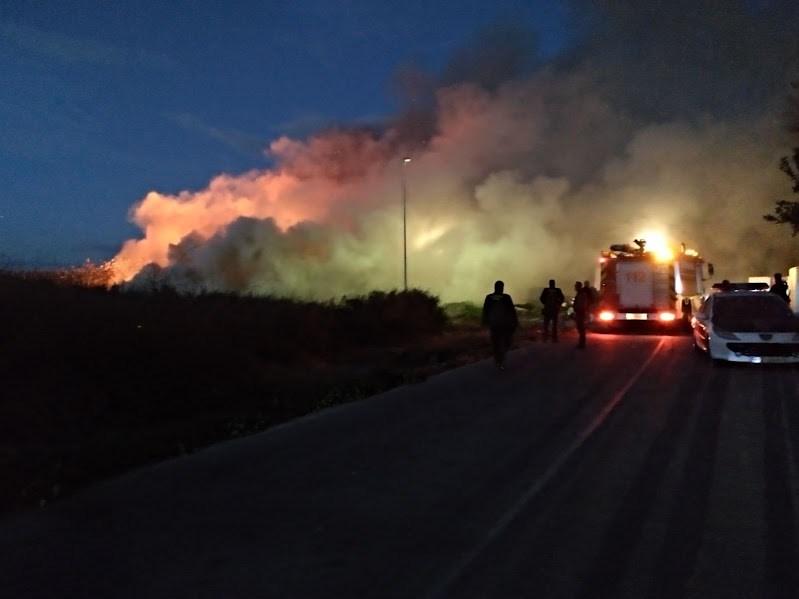
During the summer period, Spain and other countries are on high alert for forest fires, which can be devastating to both the environment, and potentially to life. Because of the consequences of human actions, the penalties for throwing cigarettes or other items out of the car are high, but it is also important to know what to do if you come across a fire whilst driving.
The very first thing to do is remain calm. Do not panic. Also, do not put yourself at risk. Get to a safe location, identify exactly where you are, and then summon assistance, which is often best done through the 112 emergency number.
What to do if you encounter a fire while driving
If you discover that one of the stretches of road you are travelling on is affected by a fire, do not take any risks and stop your journey. In this case, it is best to stop in a nearby town (or, if there is none, in a place without vegetation) until you are sure that you can continue safely; or even retrace your steps.
The DGT recommends the following:
The first recommendation is to take general precautionary measures in case of any eventuality: travel with your mobile phone battery charged and with water in the car.
Notify 112 of the location of the fire. It is important that you never assume that they already know, as they may be overwhelmed by the existence of multiple sources of fire.
If you have the My112 app (available on Android and iOS), use it so emergency services can track your location more accurately.
Roll up the windows and turn off the vehicle's ventilation systems to prevent toxic gases from entering the passenger compartment.
The DGT reminds that, in the presence of heavy smoke that reduces visibility, it is essential to turn on the car lights and the emergency lights to alert other drivers of your position.

If you find yourself in an extreme situation that requires you to abandon your car, make sure to cover all skin on your body and your respiratory tract, stay away from fire, and avoid taking shelter in caves or holes, as you could run out of oxygen. If possible, breathe through a damp cloth.
Always follow any instructions from emergency services in the area.
What you should not do in case of fire
First of all, the DGT warns that you should never try to cross an area affected by fire or smoke: the flames can move quickly and catch you before you can react. Instead, look for an alternative route that will take you away from danger.
If you need to stop, look for a safe place to do so. Choose a place that is far from the flames, in the opposite direction to the wind blowing and without vegetation around.
“If none of this is possible, it is best to opt for an already burned area. If you are driving on an off-road route, you should look for asphalt as this will act as a firebreak,” they point out.
In these cases, it is also advisable to follow these recommendations:
Avoid going to high areas, as flames tend to move to higher areas.
Don't leave your vehicle unless absolutely necessary; the vehicle offers some protection from heat and flames. If you must leave, look for an already burned area, as the fire is less likely to return there.
In summer, due to the high temperatures and dryness of the environment, it is advisable to avoid parking the car on any type of vegetation, as the heat from the engine could start a fire. It has happened before.
The DGT also reminds us that it is always better to park your car in paved areas rather than in dirt car parks, as the latter may have a vegetal substrate that could catch fire.
There has been a considerable increase in the number of vehicles parked illegally, because they are simply parked on the wrong side of the road.
As detailed in Article 90 of Spanish Traffic Law, vehicles must be parked on the right, in other words, in the flow of traffic. There are two main reasons for this, the first is because the vehicle has reflectors which therefor illuminate the correct position of the vehicle parked at night. The second is because of the impeded visibility when trying to emerge and cross traffic to start a journey.
As Article 90 explains about parking on urban roads, “it has to be done on the road or on the hard shoulder, the vehicle will be located as close as possible to its right side, except on one-way roads, where parking can also be done on the left side (article 38.2 of the articulated text).
Therefore, if you are on a normal road where traffic flows in both direction it is mandatory that you park on the right. You are not permitted to park on the left side, since you would be facing oncoming traffic.
Moreover, Article 91 explains that stopping and parking must be carried out in such a way that the vehicle does not obstruct traffic or constitute a risk to other road users, especially taking care of the vehicle's positioning and preventing it from moving when the driver is absent. (Article 38.3 of the articulated text).
Special attention with parking large vehicles on corners or crossings as they hinder visibility to drivers who want to join or cross the road. It is usually the case to find vans or caravans parked in places that even though it is not forbidden to park there, due to their size they limit visibility creating risky situations to other drivers as they cannot see. In these cases, even though these vehicles are allowed to park they should look for another parking spot.

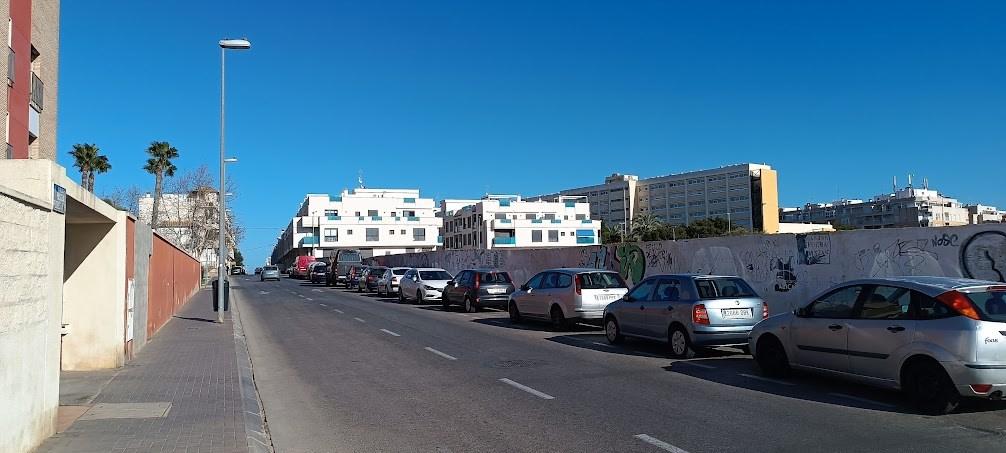
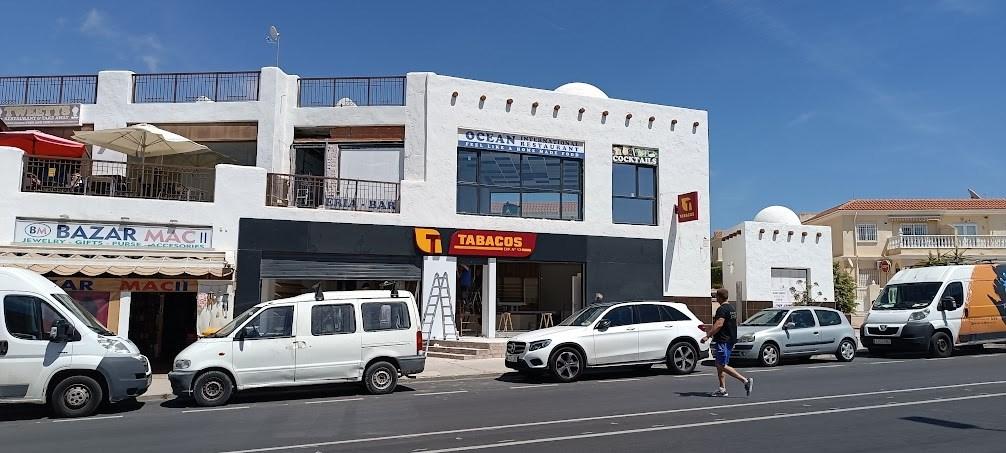


Today, Línea Directa has over 3 million customers and is the 5th largest car insurance company in terms of turnover, 13th in home insurance and 13th in the non-life sector.
At their AGM, the CEO explained the reorganisation and multi-product strategy, focusing the company and its operations around the customer and their insurance needs, in order to boost its diversification. Patricia Ayuela stated that a large part of the efforts in 2023 were aimed at building the Línea Directa of the future, “a more solid Línea Directa, better prepared to compete in the increasingly digital market that awaits us, with new demands and new assets to be insured".
With this transformation and in a changing market context, Línea Directa strengthens one of its main competitive advantages, its direct business model, based on several factors: good price, quality through operational efficiency, intensive use of data and technology for differential underwriting and service, and demand growth through innovative marketing tools.
Línea Directa has been offering great value insurance at the best possible price for over 25 years, and customers are very satisfied with the service. Following data extracted from process closure surveys after using their roadside assistance and breakdown services, existing customers reported an index of over 92% satisfaction.
Specialists in tailoring Car, Motorcycle and Home Insurance to expatriates in Spain, they’ve recently introduced 2 brand new services: Squatter Protection Insurance and Pet Insurance.



Earn rewards. If you’re an existing customer of Línea Directa you can earn extra cash by recommending us to your friends and family. Because every time you bring a new customer to Línea Directa and they take out a car or home insurance policy, you earn €30 and the person you introduce also receives €30.
Simply ask your friend to call 917 002 006 and quote your name. Your friend applies for our great value Car Insurance or Home Insurance. You and your friend receive €30 each.
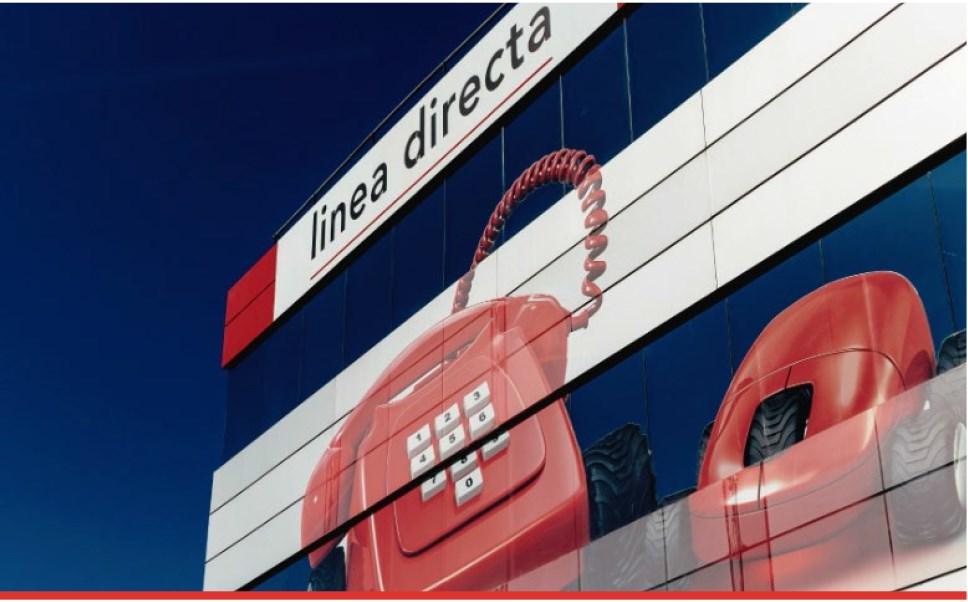
Car Insurance provides financial protection in the event of an accident. Car Insurance from Línea Directa includes many benefits: 24-hour and 7-day a week assistance, online services, free choice of garage for repairs and easy payment options.

Travel Assistance with 24/7 Roadside Assistance


Legal Assistance with +250 legal advisors on-hand
Replacement Vehicle up to 30 days if your car is stolen

You spend a great deal of time, effort and money in making your house your home. Home Insurance from Línea Directa covers your property 100% against water damage. This means that whatever the value of your loss, we will guarantee the insured contents up to 100% of their base capital.

Accidental and unforeseen spillage

If one of your pipes has burst

Flooding and mudslides
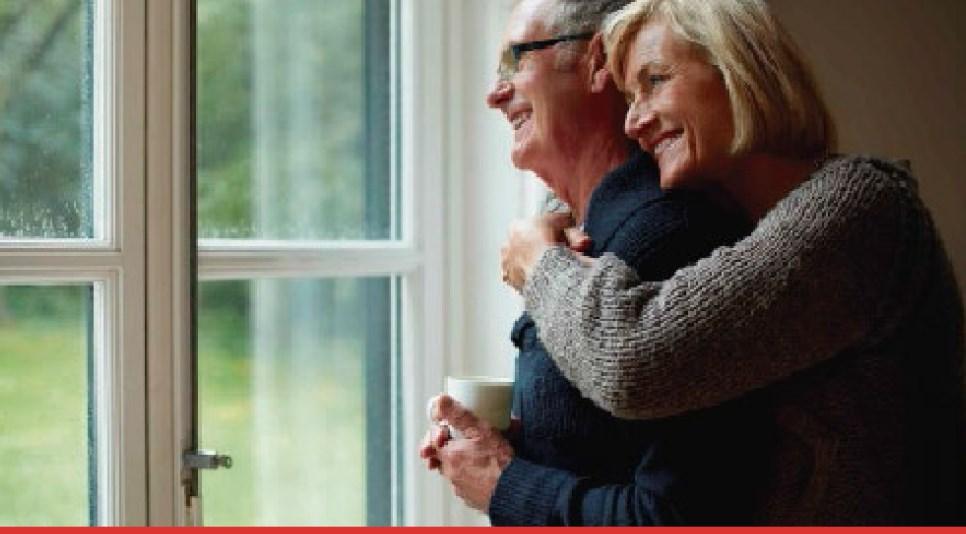
A furry friend is part of the family. Pet Insurance from Línea Directa ensures your dog or cat gets the best possible protection.


Up to €300,000 against damage to third parties
Savings in veterinary consultation costs thanks to the telehealth service

Protection against any unforeseen event or accident

Access to the help you may need at any time
Pet Insurance starts from just €39,90 per year.

A good quality helmet and proper protective clothing are essential items for all motorbike riders. But helmet, jacket and gloves are expensive. And if your motorcycle clothing gets damaged, in the event of an accident, they will need to be replaced before your next ride. Línea Directa offers Technical Equipment Cover an optional extra to its Bike Insurance policy.

Compensation will be paid on a first loss basis and up to a maximum coverage limit of €430
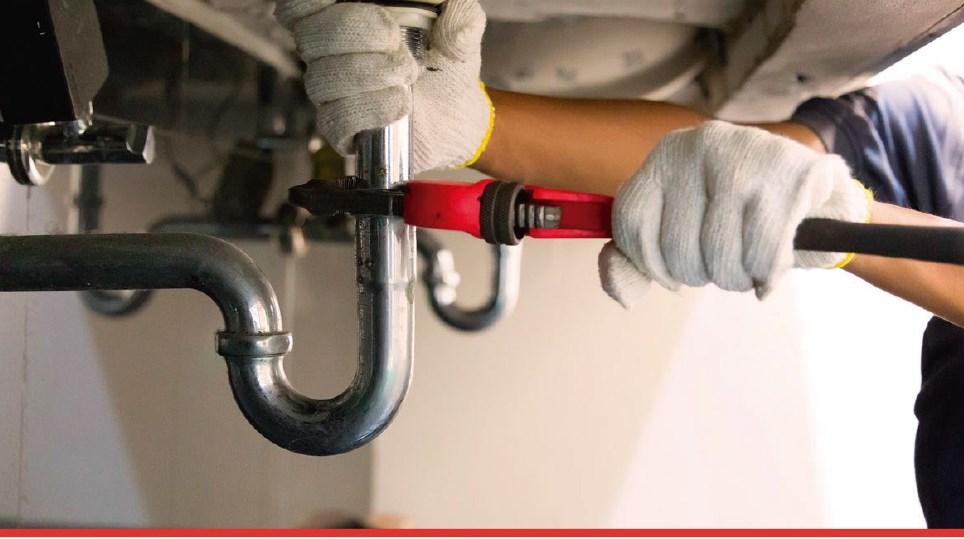
Squatting has unfortunately become one of the biggest concerns for homeowners today. For just €24 per year Línea Directa's new Squatter Protection Insurance offers you continued legal support and advice in the event that your home is squatted illegally.

You can take it out separately from your Home Insurance, whatever your insurer

Available for both main home and second home

For homes with or without mortgages


From 1st September 2024, only child car seats which display the R129 approval label may be sold, both in the new and second-hand marketplace.
Child seats approved according to the previous ECE R44/04 standard must be removed from stores and may not be sold, either new or second-hand.
The previous standard has been in place for many years, with both certificates coexisting, but from this year, the older models must be withdrawn.
How is R44/04 different from R129?
One difference between the two standards, visible on the labels themselves, is that the old standard divides seats into groups: 0+, 1, 2/3… based on the child's weight. For example, a group 1 seat was suitable for children weighing between 9 and 18 kg. In the new standard, the range of use of seats is indicated based on the child's height, without defined groups; for example, a seat for children measuring between 40 and 83 cm in height.
Another difference that cannot be seen with the naked eye is that the R129 approval standard includes a side impact test that was not carried out with the R44/04.
Older seats indicate the old approval standard (ECE R44/04) at the top; the range of use in terms of the child's weight in kilograms (kg) is also indicated, and the group to which the seat belongs is indicated at the bottom.
New seats indicate the new ECE R129 approval standard at the top, and the range of use is also indicated with the child's height in centimetres (cm). Most seats with R129 approval are also i-Size, which was a standard originally introduced to ensure that car seat sizes were compatible with child seat sizes.
What does Isofix mean?
Isofix is an international anchoring system for child car seats. It can have 2 or 3 anchoring points, which are usually called top tether. There are seats approved under the old standard that have Isofix anchors and also models under the new standard.

Are today's chairs safer?
It depends on the model, but it is true that the new standard is more demanding than the previous one in terms of the minimum safety requirements for approval and marketing. For example, a seat approved under the old standard was not subjected to a side impact test, so it could have been marketed even if it had poor results in that test.
Under the new standard, all seats are subjected to side impact tests and those that do not meet the minimum requirements of the standard cannot be marketed.
What do I do if I have an old chair?
If you have a chair approved under the previous standard, you can continue using it without any problem. It is the sale of these older standard seats which is to be prohibited, not its use. You can of course replace the seat with one that satisfies the new standard if you wish.



With the exception of areas where prohibitions apply, the roads of Spain are considered shared spaces, where vehicles of all different sizes and characteristics can circulate with equal right, but with rights come responsibilities, and we each must play our part in ensuring the safe flow of traffic.
When it comes to the size and characteristics of a vehicle, amongst the most vulnerable are cyclists, to which we also include e-scooter users more recently, but for the time being we are focussing on cyclists.
It is fair to say that many car drivers don’t like cyclists, and of those, unfortunately, some put those vulnerable road users in a dangerous position by not respecting the rules. That said, it is also true that some cyclists also add and fuel the problem for the same reason, not respecting the rules.
People who ride bicycles end up suffering the worse consequences of a collision and are the ones who come out worst. In 2022, the last year for which we have completed data, a total of 44 cyclists died in Spain and the DGT has set out to lower this figure.
One basic rule that the DGT would like to remind cyclists of is that on a general road they should ride on the right-hand side wherever possible.
Plus, if the road conditions allow, cyclists are permitted to ride two abreast, but are required to always ride in single file if the road is not clearly visible or overtaking is not possible, or they impede the flow of traffic. Cyclists can even be fined for posing a danger to road safety, leading to a fine.
It is not only the cyclists who need reminding though, as other vehicle users are also at risk of a fine for putting cyclists in danger, and vehicles must respect the minimum distance of 1.5 metres when overtaking or they also risk a fine. On a road consisting of two lanes or more in the same direction, you must move entirely over to the second lane to pass.

With more than 2,100 radar locations confirmed by the DGT, any mistake can result in a fine. To find out if that radar you passed and didn't see has fined you or not, the DGT has a free and open access tool, without having to install software or provide identification.
First, go to the DGT WEB portal and to the “Consulta del Tablón Edictal de Sanciones (TESTRA/TEU)” (Consultation of the Edictal Board of Sanctions (TESTRA/TEU)) section.
You can change the language to English near the top right of the page, but because it only partially translates, we will continue to explain the path using the Spanish text with the most likely automatic translations in brackets.
The direct link is:
https://sede.dgt.gob.es/es/multas/consulta-del-tablon-edictal-de-sanciones/
Choose how to enter in “Acceso al servicio“ (Access the service) section, looking for “Sin Certificado” (Without certificate) and click that button.
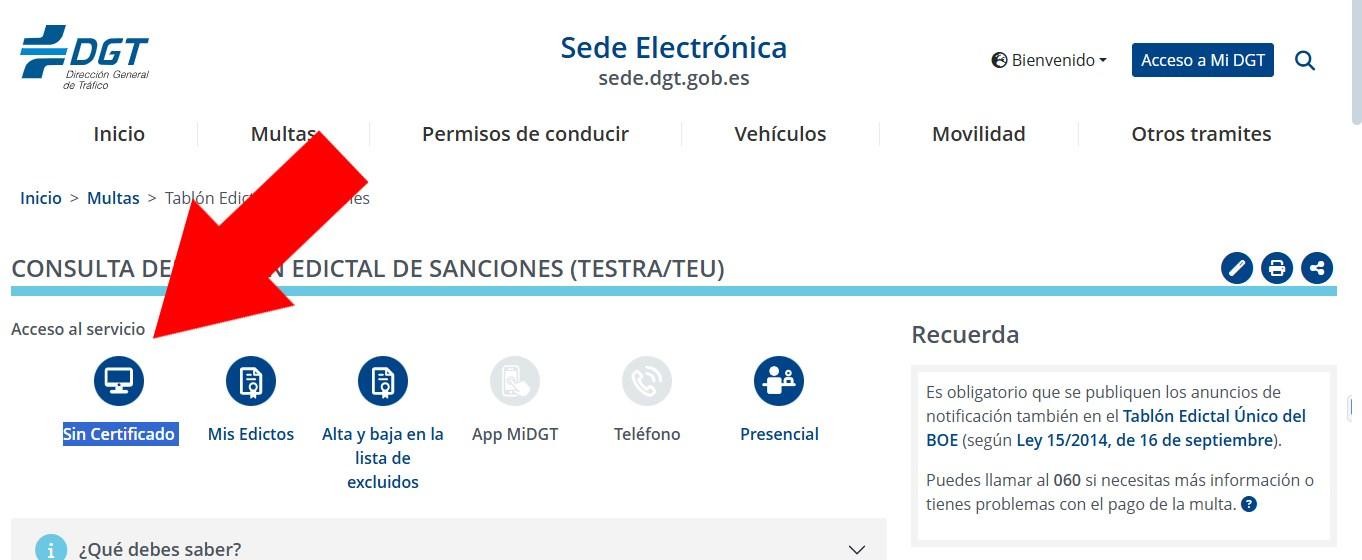

Anew window will open, which is the search engine.
The direct link is:
https://sedeapl.dgt.gob.es/WEB_TTRA_CONSULTA/Todos.faces
Now, you will see a box marked “Buscar:” (search) where you can check if you have any outstanding traffic fines by entering your details in the search engine (DNI, NIE, CIF, registration number, etc.).
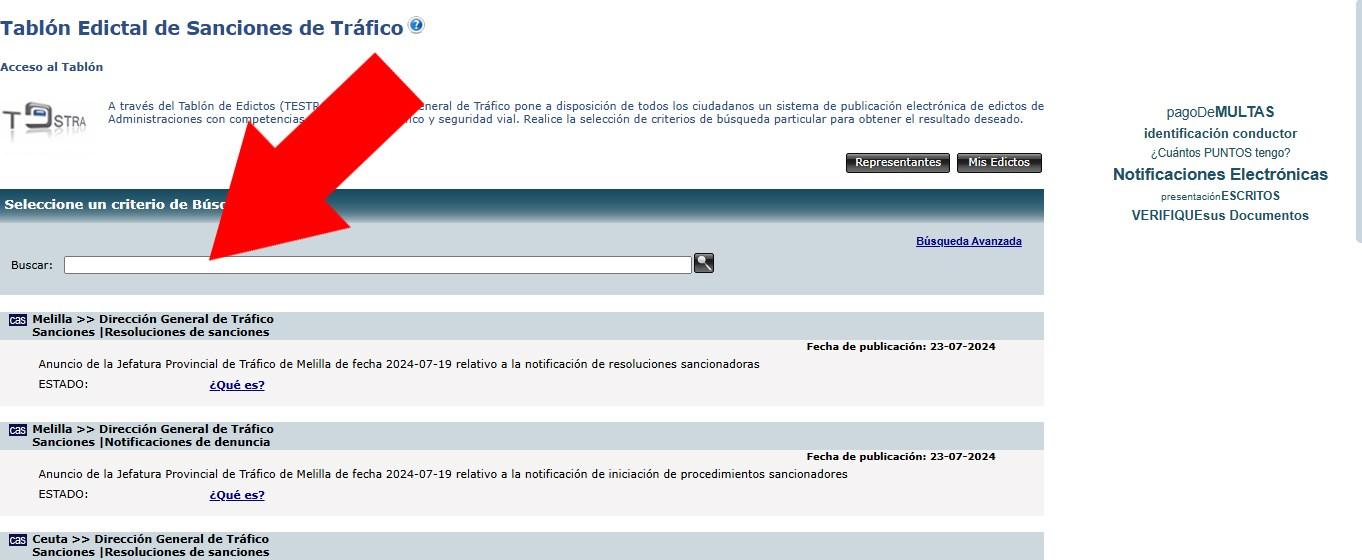
This notice board can be consulted whenever you want and the DGT ensures that the sanctions published in TESTRA will be considered notified 20 days after their publication. The notices can be consulted simply as we have told you through the DGT electronic office, and without the need for a digital certificate or electronic ID, but if you do have a digital signature it is better to enter the system using that through their digital office.
Privacy Concerns?
One of the potential issues with the search engine is that the information is public, and anyone can search with the information they have. If you do not want anyone to be able to view your personal data or the violations that the DGT issues you and that appear written in the TESTRA, you can also unsubscribe in the “Alta y baja en la lista de excluidos” (Registration and deregistration from the exclusion list) section.
You can also check fines and pay them through the miDGT app, but you have to download it and register.
Warning Notes
It is important to note that this system only works for those fines managed through the DGT. It is also important to make sure that you are on the official website and under no circumstances submit any kind of payment information to receive this information.


There have been many different trials in Spain, and other countries, of road markings, such as the Dragon’s Teeth launched some years ago, or the coloured lines, and the latest being put to the test by the Catalan Traffic Service, which may then be extended based on the results of the test phase, is in the Foix Reservoir area and consists of additional markings on the road, specifically on curves.
This measure was put into practice in Austria some time ago by the Kuratorium fur Verkehrssicherheit (KFV), the Austrian equivalent of the Spanish DGT, and provider of the images. The project consisted of painting small circles on the sharpest bends on secondary roads, next to the dividing line between the two lanes. As you approach the apex of the bend, these circles increase in size.
Early studies confirmed that

motorcyclists braked more on bends and unconsciously positioned themselves outside the area marked by the circles. In this simple way, in addition to reducing speed, they took bends on the outside, moving away from the centre of the road and giving more space to the oncoming lane.
In Austria, the measure was implemented in 2019 in the Tyrol region, which is popular with motorcyclists who enjoy the spectacular scenery offered by the Alps. According to local data, accidents were reduced by 80% in 2021, compared to the figures between 2012 and 2018.
In Luxembourg, similar measures were put in place in 2016, but instead of painting circles on bends, they painted straight lines following the same principle: as you approached the apex, the lines became longer, forcing the motorcyclist to move away.
The measure was applied on curves where 77% of motorcyclists crossed the dividing line of the road and the results of the studies were very positive: the infraction rate was reduced to 44% of motorcyclists.
In the case of the initiative by the Catalan Traffic Service, it is similar to the Luxembourg model, that is, it uses two straight lines at the apex of the sharpest curves to move motorcyclists away from the centre of the lane.


This is a common question that occurs frequently and has been brought back into the limelight due to the increase in the number of speed cameras being installed on the road network in Spain, but the simple answer is no, you cannot drive at 55 kilometres per hour in a 50 zone and not get fined.
It’s myth busting time again, and this belief that you are allowed to exceed the speed limit before you get fined is exactly that, a myth, but it is a myth which is based on something factual and somewhat scientific, known as the margin of error.
For the purpose of simplicity, we are using 50 kilometres per hour throughout this article, but the principle applies at all speeds. To demonstrate the proof of what we


are saying, look at the table of fines provided by the DGT in their Know Your Traffic Laws leaflet, and you can clearly see, for a 50 kilometre per hour limit road, the fine is issued at 51 kilometres per hour. Not 56, or 58, or any other variation, but 51.
It is true that speed cameras are set at a slightly higher limit than the road, an amount which is irrelevant so we will not reveal that, but it is not so that you are allowed to exceed the speed limit, it is because your speedometer is most likely showing the incorrect speed.
There are two reasons we will explain that contribute to this, and apologies to any experts in the mathematical field, we admit that we are simplifying this for the purpose of offering an explanation, but the first thing we have to tell you is that irrespective of the speed your vehicle is travelling, there is one part (or four parts usually to be exact) which is not moving at all. That is the part of the tyre in contact with the road. If it were moving, you would be skidding. There is also the opposite at the top of the wheel, where the speed is doubled. This actual speed also changes based on wheel size, which includes over or under inflated tyres, for example, and even the turn circle, going over bumps, the weight of the load, there are many different factors that constantly change the actual speed the vehicle is moving.
The second problem, under EU law, speedometers must never underreport a vehicle's speed. It is however permitted to over report the speed, to an extent, but never under. Therefore, in theory, you should never be driving at a speed faster than what the speedo says.
Some vehicles, such as certain HGV’s or buses, have their speedometer calibrated, although this calibration has to be carried out frequently to ensure accuracy, but for the vast majority of vehicles they are not, and so, the speed you see on your speedo is highly likely to be wrong. It might only be out by a few kilometres per hour, although the gap increases with speed, but the reality is this is the reason why there is a margin of error set in the cameras. Not to allow you to speed, but to allow for these anomalies mentioned.
Incidentally, if you are thinking that the GPS or mapping speed might be more accurate, it isn’t.
So, the solution, is stay within the maximum permitted speed, or slower, as speed limits are maximums and not targets.

Summer is a great time for those who like the freedom of two wheels, feeling the wind as you ride through towns and countries, a freedom like no other, but we must also be aware that with the freedom of two wheels comes a great responsibility, as motorcycles are amongst some of the most vulnerable vehicles on the road, a situation often worsened by bad riding practice by the riders themselves.
According to the Directorate General of Traffic (DGT) figures, whereas motorcycles account for just 3% of traffic, they account for 25% of fatalities.
Of course, if is not only the riders to blame. Other road users must also pay particular attention to others, including the most vulnerable, but the DGT are running a campaign throughout the summer to make those riders who do flout the rules, and risk their safety and that of others, by clamping down on unsafe practices.
Motorcycle riders are obliged to abide by all of the rules of the road in the sae way as other road users. Inappropriate speed, dangerous overtaking, weaving in and out of traffic, are just some of the practices frequently witnessed committed by motorcyclists, and some of the actions that the Guardia Civil are closely monitoring.
In fact, the Guardia Civil recently adopted a new approach to motorbike safety, by starting to use unmarked motorbikes themselves, allowing them to move unnoticed until they were needed to take action against a dangerous rider.
Some of the most common DO NOTs include don’t speed,


don’t overtake inappropriately or illegally, crossing the solid white line for example, don’t ride on the hard shoulder, only mopeds should do that, don’t weave in and out of traffic.
DO act courteously and responsibly, keeping your distance, abiding by road signs, including the STOP sign, remembering that it is mandatory to put at least one foot down on the ground, do keep within the speed limits.
It is not only about the actions on the road, but also equally important to protect yourself.
Remember that wearing a helmet is mandatory. Riding a motorcycle is 17 times more likely to cause an incident than riding a car. And in 20% of motorcycle incidents, the helmet is thrown off due to the wrong size. Always wear one that is the right size and fastened properly.
Please, don’t be tempted to strip down to shorts and a tshirt, the same applies to passengers, as skin does not fair well when scraped along tarmac. You should protect your body with appropriate clothing, preferably breathable technical clothing with adequate protection, which prevents heat from being stored in our body and thus reduces the chances of suffering heat stroke. Do not forget gloves and technical shoes or boots, appropriate to the type of motorcycle you ride. It is advisable to use vests or jackets with built-in airbags.
You should stay hydrated (water, juices, etc.) but not a drop of alcohol. Drink from time to time, otherwise your reflexes will slow down, and you will make more mistakes. Stop for a break and drink. In addition, stretch your legs. Riding for a long time in the same position is exhausting.

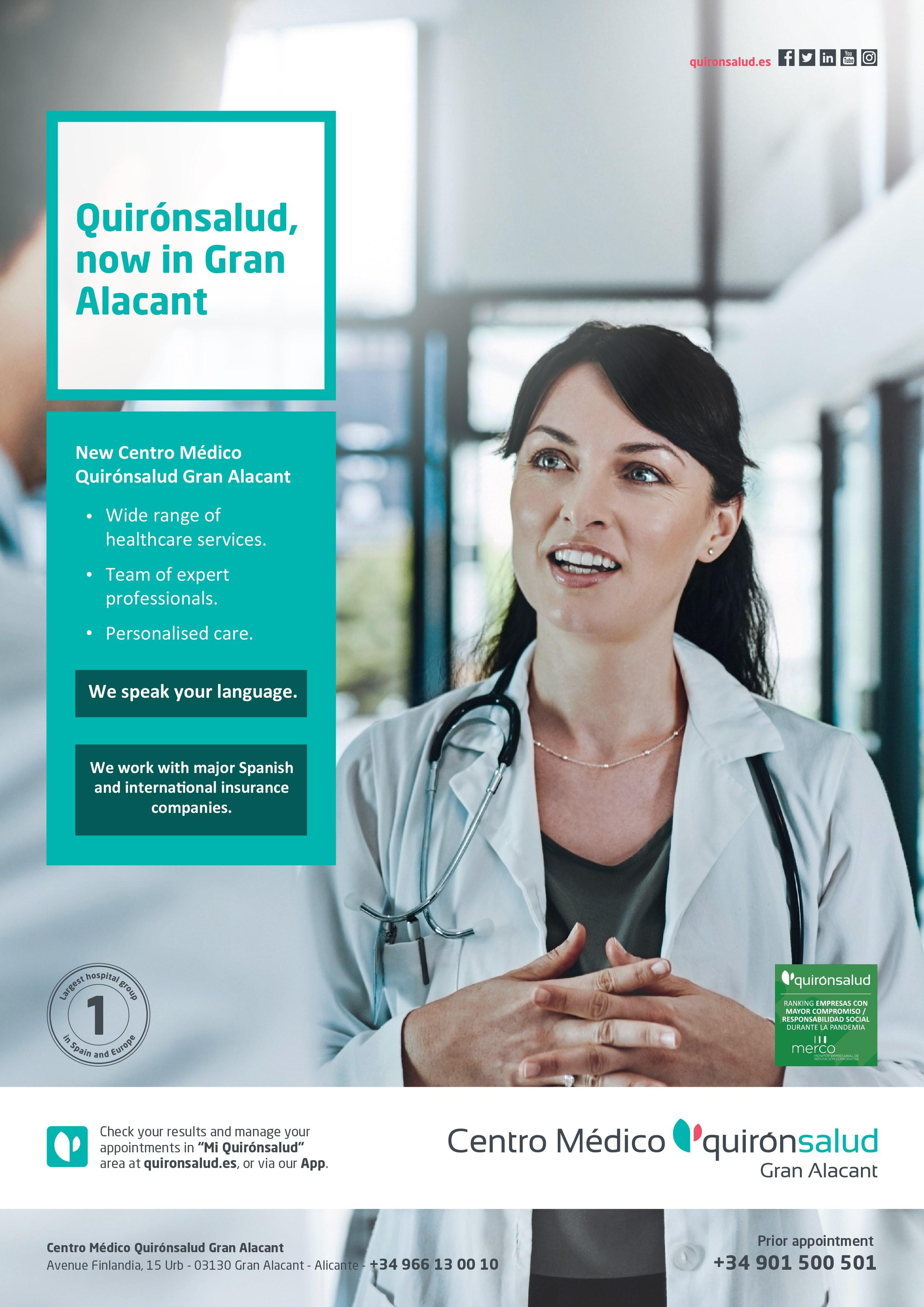


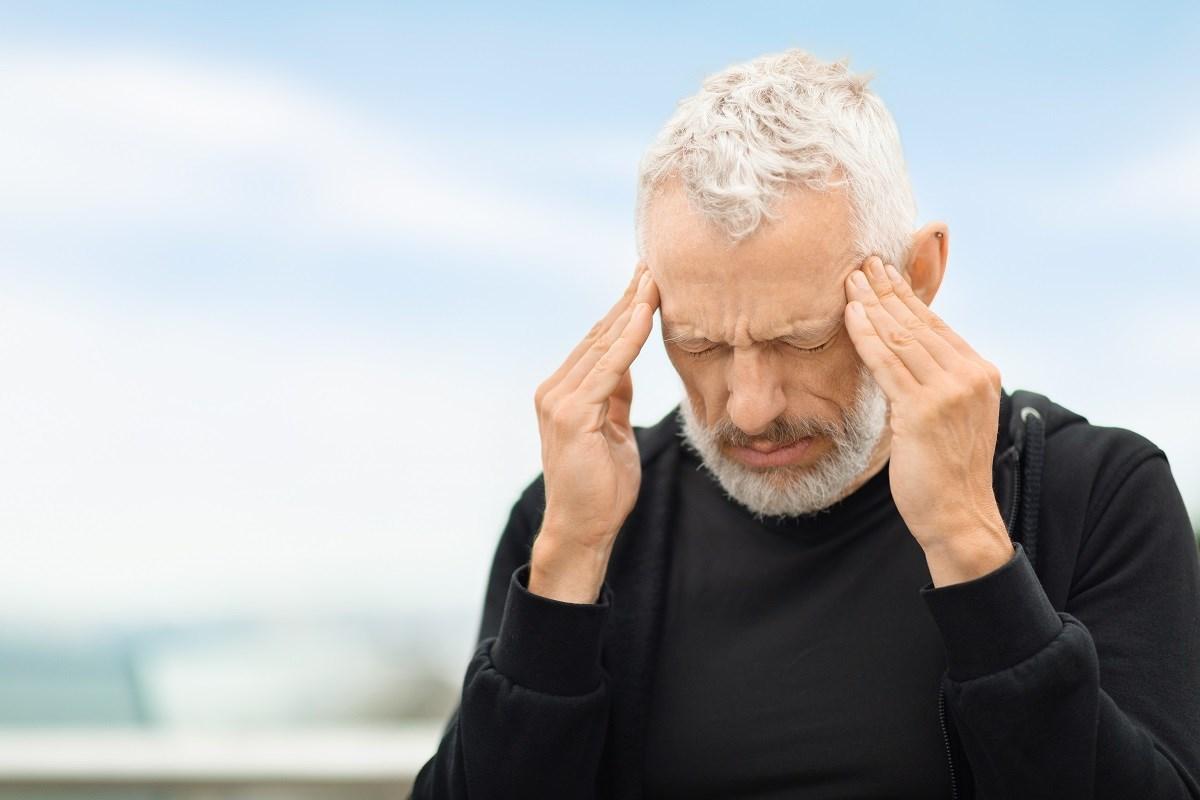
With the arrival of summer and rising temperatures, the care of the elderly becomes crucial. The effects of heat on the body can be devastating, especially for those with a lower capacity to adapt, such as the elderly. Experts from Quirónsalud Torrevieja offer professional insights into how heat can affect our seniors and the best practices to protect their health during the summer season.
Extreme heat poses a significant health threat due to its impact on an individual's hydration status and haemodynamic situation. According to specialists from the Emergency Department of Quirónsalud Torrevieja, "extreme heat can pose a significant health threat due to its effect on the individual's hydration status and haemodynamic situation, which can lead to vasodilation, reduced blood pressure, and even loss of consciousness and death in extreme cases of heat stroke."
Vasodilation and reduced blood pressure are physiological responses to heat, but in elderly individuals, these reactions can trigger severe complications. Although the effects are usually mild and manageable, it is crucial to recognise particularly threatening situations to prevent serious consequences.
The elderly are particularly vulnerable to heat due to several factors. A reduced ability to thermoregulate, diminished sensation of thirst, and consequently lower hydration levels, along with chronic illnesses and the use of multiple medications, increase the risk of heatstroke in older adults.
The reduced capacity for thermoregulation means that the elderly cannot cool their bodies as effectively as younger individuals. This, combined with a diminished sense of thirst, can lead to rapid and dangerous dehydration. Additionally, chronic illnesses such as neurodegenerative diseases and certain medications, especially those affecting blood pressure, further increase the risk.
There is no specific temperature at which the risk increases, but clearly, the higher the temperature, the greater the danger. "It could be said that there is no specific temperature at which the risk increases, but evidently, the higher the temperature, the greater the risk," say the specialists.
Heat can affect the progression of any chronic illness, especially if it is severe. "Any chronic condition can be affected in its progression when exposed to the effects of heat, especially if it is severe," note the experts. Beyond the effect of heat on certain diseases, it is essential to pay attention to how some diseases predispose individuals to reduced adaptation.
Neurodegenerative diseases and medications with hypotensive or diuretic effects are

particularly concerning. These factors can further hinder the body's ability to manage thermal stress, increasing the risk of severe complications.
It is crucial to be alert to any changes or general symptoms in the elderly. Extreme signs of heatstroke include hyperthermia, but symptoms such as changes in consciousness, confusion, dizziness, nausea, vomiting, weakness, and headaches should also be monitored.
Caring for the elderly during the summer is not substantially different from caring for the general population, but it requires greater rigour in application. Key recommendations include:
- Adequate Hydration: It is essential to maintain a good fluid intake, considering that the elderly have a lower sensation of thirst. "It is crucial to have a good fluid intake, even more so considering that the elderly have a lower physiological sensation of thirst."
- Light Meals: Meals should be light to facilitate digestion and avoid overheating the body.
- Avoiding Sun Exposure during Peak Hours**: It is crucial to avoid sun exposure during peak intensity hours, generally between 12:00 and 17:00.
- Protection from Heat: Using hats and lightweight clothing that covers most of the body can help protect from the heat. "Protecting the head with hats" is a simple yet effective measure.
- Avoiding Intense Physical Exercise: During the hottest hours of the day, intense physical exercise should be avoided.
- Cool Environments: Keep indoor spaces cool with fans, air conditioning, or by keeping windows and blinds closed during the day.
Caring for the elderly during the summer requires special attention due to their vulnerability to heat. By following the recommendations of the specialists from Quirónsalud Torrevieja, we can prevent severe complications and ensure our seniors enjoy a safe and healthy summer. The key lies in prevention, adequate hydration, and protection against extreme heat measures that can make the difference between a pleasant summer and a medical emergency.
And remember, this summer, if any problems arise, our emergency service will take care of you.
Quirónsalud Torrevieja Emergency Service: https://www.quironsalud.com/torrevieja/en/ services/accident-emergency
Directions: https://maps.app.goo.gl/WGzZR2Xz6b554bgM8
What are the most effective therapies for the rehabilitation of brain damage after a traffic accident?

Dr. Mirko Alavena, coordinator of the neurorehabilitation service at Hospital Quirónsalud Torrevieja explains the details of this injury and how necessary neurorehabilitation is.
Acquired brain injury (ABI) refers to any injury to the brain that occurs after birth, in contrast to congenital brain injuries, which are present from birth.
Dr. Mirko Alavena, coordinator of the neurorehabilitation service at Quirónsalud Torrevieja Hospital, warns that "ACBD can affect people of any age and can have a significant impact on an individual's physical, cognitive and emotional functioning".
This type of injury can be caused by a variety of factors including:
-Cranioencephalic trauma (CTE), which is caused by impacts to the head, which can result from traffic accidents, falls, assaults, among others.
-Cerebrovascular accidents (CVA): better known as strokes, they can be ischaemic (caused by blockage of blood vessels) or haemorrhagic (caused by rupture of blood vessels).
-Infections: Such as encephalitis or meningitis, which affect brain tissue.
-Brain anoxia or hypoxia: Lack of oxygen to the brain due to situations such as drowning, suffocation or cardiac arrest.
-Brain tumours: which can damage surrounding brain tissue.
-Degenerative diseases: such as Alzheimer's disease, although this is a particular case given its inevitably progressive nature.
-Toxins and substances: Intoxication by drugs, alcohol or chemicals.
-In road traffic accidents, injuries that can cause brain damage include brain contusions, which are direct blows to the brain that cause bruising or bruising of the brain. There are also concussions, which are "less severe injuries but can have cumulative effects, especially if they occur repeatedly," says Alavena.
Neurorehabilitation in Torrevieja
Neurorehabilitation is a therapeutic process aimed at helping people who have suffered brain damage to recover their functions and improve their quality of life.

This process includes the assessment, treatment and monitoring of the patient to maximise their physical, cognitive and emotional recovery.
It involves professionals from different areas such as neurology, physiotherapy, occupational therapy, speech therapy, neuropsychology; and other specialists may participate depending on the particular needs of the patient.
This procedure is "necessary after a traffic accident when the individual has suffered some kind of brain damage that affects their physical, cognitive or emotional abilities," says Dr Alavena. This may include loss of mobility or sensation in some part of the body, difficulties in speech or communication, or cognitive problems such as memory loss.
Other symptoms may include difficulty concentrating or problems with decisionmaking, emotional changes such as depression, anxiety or personality changes. All of these can lead to loss of functional skills needed for daily activities. All this boils down to the fact that "if these symptoms are detected in the medical evaluation after the accident, they should be assessed and, if possible, neurorehabilitation should be started as soon as possible," saysAlavena.
The duration of neurorehabilitation treatment varies widely depending on the severity of the brain damage.
Neurorehabilitation techniques
The main neurorehabilitation techniques include:
Physiotherapy: To improve mobility, balance, strength and coordination.
Occupational therapy: To help regain skills needed for daily and work activities.
Speech therapy: To address speech and swallowing problems.
Neuropsychology: To address cognitive and emotional problems.
Cognitive stimulation: Through exercises and activities that improve memory, attention and other cognitive functions.
Technology-assisted therapies: such as virtual reality, robotics or neurofeedback.
Pharmacological therapy: When necessary to manage specific symptoms.
The duration of a neurorehabilitation treatment varies widely depending on the severity of the brain damage, the patient's response to treatment and their individual
What are the most effective therapies for the rehabilitation of brain damage after a traffic accident?

goals. It can last from a few months to several years.
In some cases, as the doctor clarifies, "rehabilitation can be a continuous process with intensive treatment phases followed by long-term maintenance and support". Regular assessment of the patient's progress is crucial to adjust the treatment plan as needed.
The most effective therapies for the rehabilitation of brain damage after a traffic accident are based on multidisciplinary work, i.e. a team of several professionals working towards a common goal of recovery: from the rehabilitation doctor, the neurologist, neurological physiotherapists, and neuropsychologists, as well as requesting assistance from other professionals according to the particular needs of the patient.
"Each patient," explains the neurorehabilitator, "must have an intensive and individualised daily plan of an average duration of forty-five minutes each, both on an inpatient and outpatient basis, with the aim of recovering the damaged functions, strengthening those that are reserved and adapting the limitations that may derive from the brain damage".
This type of therapy is of long duration with an inpatient stay while the patient is dependent on medical care and continuing with outpatient rehabilitation. "The important thing is that families know that in the face of a brain injury there are alternatives for recovering autonomy, we have cases with 100% recovery and others in which they have managed to return to daily life with a great deal of independence. In addition, it is important to turn to patient associations and hospital centres such as Quirónsalud Torrevieja where the patient can count on support and advice without obligation," says Dr.Alavena.
Hospital Quirónsalud Torrevieja and Quirónsalud Alicante have a Traffic Unit made up of rehabilitation experts, traumatologists, neurologists and therapists. The aim of this unit is to offer a personalised service to all victims of traffic accidents, guaranteeing their safety and peace of mind. We offer totally free assistance 24

hours a day, 365 days a year, uninterruptedly in the emergency department of the Quirónsalud Torrevieja hospital.
The services of this Unit include first emergency visit, hospitalisation, diagnostic tests, consultations with the different experts, rehabilitation doctor and rehabilitation treatment, intensive care unit and, if necessary, urgent surgery. In addition, professionals have rapid access to support services (magnetic resonance imaging, CT, ultrasound, laboratory and operating theatre) to make an accurate diagnosis.
One of the keys to this Traffic Unit is the multidisciplinary approach to patients, as most musculoskeletal and spinal injuries require the coordination of different specialties for both healing and stabilisation of the injuries. The specialist from the Torrevieja Neurorehabilitation service adds that the recovery time after these injuries varies greatly from patient to patient, although the average is between one and three months.
Request information about the neurorehabilitation service at Hospital Quirónsalud Torrevieja.
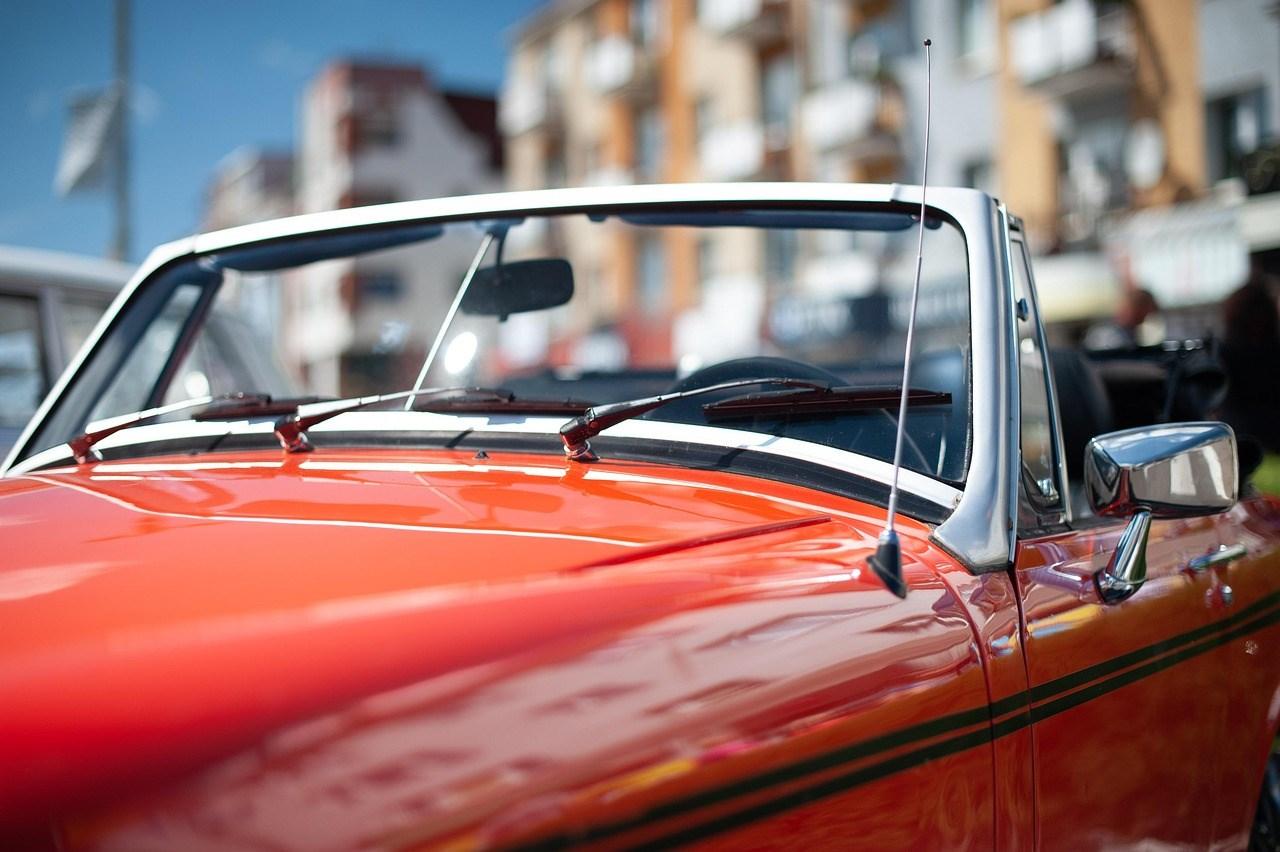
It's summer and we are experiencing several heat waves that bring us very high temperatures. This represents a fairly high risk when we get behind the wheel. But we can take several precautions when starting the trip or simply when we have to drive at times when the heat is pressing, and it is difficult to maintain a pleasant temperature inside the car.
When you get into your car when it's so hot, you need to reduce the temperature inside. So, it's a good idea to leave the door open for a few minutes to let the warm air out. It's a good idea to roll down the windows to allow a draft and renew the air inside. In just a few seconds, the temperature will drop considerably.
It is not a good idea to leave the vehicle unattended though.
When you are ready to set off, before turning on the air conditioning, it is best to keep the windows down and drive for a few minutes. This way, the air flow will allow the temperature to drop a little more. After driving for a few minutes, you can close the windows and turn on the air conditioning or climate control. This will


allow the temperature inside the car to be slightly lower, making driving more pleasant and avoiding the heat from outside.
The temperature at which you set your air conditioning is a very personal matter. However, it is still advisable to set it to a temperature no lower than 22 degrees. This will make driving cooler, but there will not be a huge difference to the outside temperature.
You too need to stay well hydrated. There is a risk when actually driving that the act of drinking can distract you, and so it can result in a fine. If it is safe, and perhaps a passenger can help you open the bottle, an occasional sip should not pose a problem. However, you should pay attention to this issue and plan your road trip by scheduling the appropriate stops so you can eat and drink safely.
Clothing is important, so you should dress comfortably and wear appropriate footwear.
When parking, you should look for a place with shade. As shade varies throughout the day, you should bear in mind that you may be in the shade in the morning and in the sun for several hours in the afternoon. A sunshade in the front can make the temperature rise a little less than if you let the sun shine directly on you. If you can put a second sunshade in the back, it will help reduce the effect of the sun on the passenger compartment.



